Nava Atlas's Blog, page 60
January 10, 2020
A Matter of Prejudice by Kate Chopin (1895) – full text
The short story, “A Matter of Prejudice” by Kate Chopin (1850 – 1904), the American author best remembered for The Awakening (1899), is one of many short works by this prolific author. It was written in 1893, first published in 1895, and included in Chopin’s collection A Night in Acadie (1897).
Much of Chopin’s literary output preceded The Awakening, a novella; the poor reception it received is thought to have discouraged her. It was often vilified by the press, and frequently banned. Decades later it became a feminist classic, and revitalized interest in her other writings.
“A Matter of Prejudice,” like many of Chopin’s works, comments on social mores and issues in late 19th-century Creole culture. It explores the theme of motherhood, as do many of her other stories, this one particularly focusing on the alienation of a mother and her son due to his choice of a wife. Per Seyerstad, a Chopin biographer, noted,
“This story is the only one by Chopin centered on the conflict between the new American and old Creole cultures. It illustrates her developing skill in characterization and irony, especially in its conclusion.”
. . . . . . . . . .
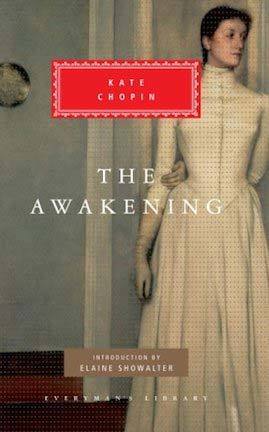
The Awakening (1899) – full text
. . . . . . . . . .
“A Matter of Prejudice”
Madame Carambeau wanted it strictly understood that she was not to be disturbed by Gustave’s birthday party. They carried her big rocking-chair from the back gallery, that looked out upon the garden where the children were going to play, around to the front gallery, which closely faced the green levee bank and the Mississippi coursing almost flush with the top of it.
The house — an old Spanish one, broad, low and completely encircled by a wide gallery – was far down in the French quarter of New Orleans. It stood upon a square of ground that was covered thick with a semi-tropical growth of plants and flowers. An impenetrable board fence, edged with a formidable row of iron spikes, shielded the garden from the prying glances of the occasional passer-by.
Madame Carambeau’s widowed daughter, Madame Cécile Lalonde, lived with her. This annual party, given to her little son, Gustave, was the one defiant act of Madame Lalonde’s existence. She persisted in it, to her own astonishment and the wonder of those who knew her and her mother.
For old Madame Carambeau was a woman of many prejudices – so many, in fact, that it would be difficult to name them all. She detested dogs, cats, organ-grinders, white servants and children’s noises. She despised Americans, Germans and all people of a different faith from her own. Anything not French had, in her opinion, little right to existence.
She had not spoken to her son Henri for ten years because he had married an American girl from Prytania street. She would not permit green tea to be introduced into her house, and those who could not or would not drink coffee might drink tisane of fleur de Laurier for all she cared.
Nevertheless, the children seemed to be having it all their own way that day, and the organ-grinders were let loose. Old madame, in her retired corner, could hear the screams, the laughter and the music far more distinctly than she liked. She rocked herself noisily, and hummed “Partant pour la Syrie.”
She was straight and slender. Her hair was white, and she wore it in puffs on the temples. Her skin was fair and her eyes blue and cold.
Suddenly she became aware that footsteps were approaching, and threatening to invade her privacy — not only footsteps, but screams! Then two little children, one in hot pursuit of the other, darted wildly around the corner near which she sat.
The child in advance, a pretty little girl, sprang excitedly into Madame Carambeau’s lap, and threw her arms convulsively around the old lady’s neck. Her companion lightly struck her a “last tag,” and ran laughing gleefully away.
The most natural thing for the child to do then would have been to wriggle down from madame’s lap, without a “thank you” or a “by your leave,” after the manner of small and thoughtless children. But she did not do this. She stayed there, panting and fluttering, like a frightened bird.
Madame was greatly annoyed. She moved as if to put the child away from her, and scolded her sharply for being boisterous and rude. The little one, who did not understand French, was not disturbed by the reprimand, and stayed on in madame’s lap. She rested her plump little cheek, that was hot and flushed, against the soft white linen of the old lady’s gown.
Her cheek was very hot and very flushed. It was dry, too, and so were her hands. The child’s breathing was quick and irregular. Madame was not long in detecting these signs of disturbance.
Though she was a creature of prejudice, she was nevertheless a skillful and accomplished nurse, and a connoisseur in all matters pertaining to health. She prided herself upon this talent, and never lost an opportunity of exercising it. She would have treated an organ-grinder with tender consideration if one had presented himself in the character of an invalid.
Madame’s manner toward the little one changed immediately. Her arms and her lap were at once adjusted so as to become the most comfortable of resting places. She rocked very gently to and fro. She fanned the child softly with her palm leaf fan, and sang “Partant pour la Syrie” in a low and agreeable tone.
The child was perfectly content to lie still and prattle a little in that language which madame thought hideous. But the brown eyes were soon swimming in drowsiness, and the little body grew heavy with sleep in madame’s clasp.
When the little girl slept Madame Carambeau arose, and treading carefully and deliberately, entered her room, that opened near at hand upon the gallery. The room was large, airy and inviting, with its cool matting upon the floor, and its heavy, old, polished mahogany furniture. Madame, with the child still in her arms, pulled a bell-cord; then she stood waiting, swaying gently back and forth. Presently an old black woman answered the summons. She wore gold hoops in her ears, and a bright bandanna knotted fantastically on her head.
“Louise, turn down the bed,” commanded madame. “Place that small, soft pillow below the bolster. Here is a poor little unfortunate creature whom Providence must have driven into my arms.” She laid the child carefully down.
“Ah, those Americans! Do they deserve to have children? Understanding as little as they do how to take care of them!” said madame, while Louise was mumbling an accompanying assent that would have been unintelligible to any one unacquainted with the negro patois.
. . . . . . . . . . .
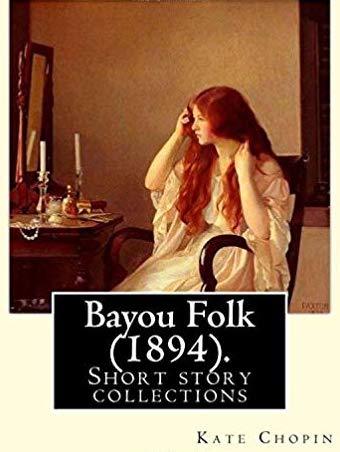
You might also enjoy: Desirée’s Baby (full text)
. . . . . . . . . . .
“There, you see, Louise, she is burning up,” remarked madame; “she is consumed. Unfasten the little bodice while I lift her. Ah, talk to me of such parents! So stupid as not to perceive a fever like that coming on, but they must dress their child up like a monkey to go play and dance to the music of organ- grinders.
“Haven’t you better sense, Louise, than to take off a child’s shoe as if you were removing the boot from the leg of a cavalry officer?” Madame would have required fairy fingers to minister to the sick. “Now go to Mamzelle Cécile, and tell her to send me one of those old, soft, thin nightgowns that Gustave wore two summers ago.”
When the woman retired, madame busied herself with concocting a cooling pitcher of orange-flower water, and mixing a fresh supply of eau sédative with which agreeably to sponge the little invalid.
Madame Lalonde came herself with the old, soft nightgown. She was a pretty, blonde, plump little woman, with the deprecatory air of one whose will has become flaccid from want of use. She was mildly distressed at what her mother had done.
“But, mamma! But, mamma, the child’s parents will be sending the carriage for her in a little while. Really, there was no use. Oh dear! oh dear!”
If the bedpost had spoken to Madame Carambeau, she would have paid more attention, for speech from such a source would have been at least surprising if not convincing. Madame Lalonde did not possess the faculty of either surprising or convincing her mother.
“Yes, the little one will be quite comfortable in this,” said the old lady, taking the garment from her daughter’s irresolute hands.
“But, mamma! What shall I say, what shall I do when they send? Oh, dear; oh, dear!”
“That is your business,” replied madame, with lofty indifference. “My concern is solely with a sick child that happens to be under my roof. I think I know my duty at this time of life, Cécile.”
As Madame Lalonde predicted, the carriage soon came, with a stiff English coachman driving it, and a red-checked Irish nurse-maid seated inside. Madame would not even permit the maid to see her little charge. She had an original theory that the Irish voice is distressing to the sick.
Madame Lalonde sent the girl away with a long letter of explanation that must have satisfied the parents; for the child was left undisturbed in Madame Carambeau’s care. She was a sweet child, gentle and affectionate. And, though she cried and fretted a little throughout the night for her mother, she seemed, after all, to take kindly to madame’s gentle nursing. It was not much of a fever that afflicted her, and after two days she was well enough to be sent back to her parents.
Madame, in all her varied experience with the sick, had never before nursed so objectionable a character as an American child. But the trouble was that after the little one went away, she could think of nothing really objectionable against her except the accident of her birth, which was, after all, her misfortune; and her ignorance of the French language, which was not her fault.
But the touch of the caressing baby arms; the pressure of the soft little body in the night; the tones of the voice, and the feeling of the hot lips when the child kissed her, believing herself to be with her mother, were impressions that had sunk through the crust of madame’s prejudice and reached her heart.
She often walked the length of the gallery, looking out across the wide, majestic river. Sometimes she trod the mazes of her garden where the solitude was almost that of a tropical jungle. It was during such moments that the seed began to work in her soul – the seed planted by the innocent and undesigning hands of a little child.
The first shoot that it sent forth was Doubt. Madame plucked it away once or twice. But it sprouted again, and with it Mistrust and Dissatisfaction. Then from the heart of the seed, and amid the shoots of Doubt and Misgiving, came the flower of Truth. It was a very beautiful flower, and it bloomed on Christmas morning.
As Madame Carambeau and her daughter were about to enter her carriage on that Christmas morning, to be driven to church, the old lady stopped to give an order to her black coachman, François. François had been driving these ladies every Sunday morning to the French Cathedral for so many years – he had forgotten exactly how many, but ever since he had entered their service, when Madame Lalonde was a little girl. His astonishment may therefore be imagined when Madame Carambeau said to him:
“François, to-day you will drive us to one of the American churches.”
“Plait-il, madame?” the negro stammered, doubting the evidence of his hearing.
“I say, you will drive us to one of the American churches. Any one of them,” she added, with a sweep of her hand. “I suppose they are all alike,” and she followed her daughter into the carriage.
Madame Lalonde’s surprise and agitation were painful to see, and they deprived her of the ability to question, even if she had possessed the courage to do so.
François, left to his fancy, drove them to St. Patrick’s Church on Camp street. Madame Lalonde looked and felt like the proverbial fish out of its element as they entered the edifice. Madame Carambeau, on the contrary, looked as if she had been attending St. Patrick’s church all her life. She sat with unruffled calm through the long service and through a lengthy English sermon, of which she did not understand a word.
When the mass was ended and they were about to enter the carriage again, Madame Carambeau turned, as she had done before, to the coachman.
“François,” she said, coolly, “you will now drive us to the residence of my son, M. Henri Carambeau. No doubt Mamzelle Cécile can inform you where it is,” she added, with a sharply penetrating glance that caused Madame Lalonde to wince.
Yes, her daughter Cécile knew, and so did François, for that matter. They drove out St. Charles avenue – very far out. It was like a strange city to old madame, who had not been in the American quarter since the town had taken on this new and splendid growth.
The morning was a delicious one, soft and mild; and the roses were all in bloom. They were not hidden behind spiked fences. Madame appeared not to notice them, or the beautiful and striking residences that lined the avenue along which they drove. She held a bottle of smelling-salts to her nostrils, as though she were passing through the most unsavory instead of the most beautiful quarter of New Orleans.
Henri’s house was a very modern and very handsome one, standing a little distance away from the street. A well-kept lawn, studded with rare and charming plants, surrounded it. The ladies, dismounting, rang the bell, and stood out upon the banquette, waiting for the iron gate to be opened.
A white maid-servant admitted them. Madame did not seem to mind. She handed her a card with all proper ceremony, and followed with her daughter to the house.
Not once did she show a sign of weakness; not even when her son, Henri, came and took her in his arms and sobbed and wept upon her neck as only a warm-hearted Creole could. He was a big, good-looking, honest-faced man, with tender brown eyes like his dead father’s and a firm mouth like his mother’s.
Young Mrs. Carambeau came, too, her sweet, fresh face transfigured with happiness. She led by the hand her little daughter, the “American child” whom madame had nursed so tenderly a month before, never suspecting the little one to be other than an alien to her.
“What a lucky chance was that fever! What a happy accident!” gurgled Madame Lalonde.
“Cécile, it was no accident, I tell you; it was Providence,” spoke madame, reprovingly, and no one contradicted her.
They all drove back together to eat Christmas dinner in the old house by the river. Madame held her little granddaughter upon her lap; her son Henri sat facing her, and beside her was her daughter-in-law.
Henri sat back in the carriage and could not speak. His soul was possessed by a pathetic joy that would not admit of speech. He was going back again to the home where he was born, after a banishment of ten long years.
He would hear again the water beat against the green levee-bank with a sound that was not quite like any other that he could remember. He would sit within the sweet and solemn shadow of the deep and overhanging roof; and roam through the wild, rich solitude of the old garden, where he had played his pranks of boyhood and dreamed his dreams of youth. He would listen to his mother’s voice calling him, “mon fils,” as it had always done before that day he had had to choose between mother and wife. No; he could not speak.
But his wife chatted much and pleasantly — in a French, however, that must have been trying to old madame to listen to.
“I am so sorry, ma mère,” she said, “that our little one does not speak French. It is not my fault, I assure you,” and she flushed and hesitated a little. “It – it was Henri who would not permit it.”
“That is nothing,” replied madame, amiably, drawing the child close to her. “Her grandmother will teach her French; and she will teach her grandmother English. You see, I have no prejudices. I am not like my son. Henri was always a stubborn boy. Heaven only knows how he came by such a character!”
The post A Matter of Prejudice by Kate Chopin (1895) – full text appeared first on Literary Ladies Guide.
8 Iconic Poems by Elizabeth Bishop
Elizabeth Bishop (1911 – 1979) the noted American poet, was recognized with numerous awards during the course of her career, including the Pulitzer Prize. Here you’ll find 8 iconic poems by Elizabeth Bishop that are among her best known.
Not a particularly prolific writer, Bishop published only 101 poems during her lifetime. Her literary reputation has grown since her death, with iconic poems like “One Art,” “A Miracle for Breakfast,” “Sestina,” and “The Fish.”
As a poet, Bishop took great care to rewrite and revise her work. She didn’t give the reader much of a glimpse into her own life, but instead, her poems contained intimate observations of the physical world. She often expressed themes of loss and the struggle to find one’s place in the world in universal rather than personal way.
Her poetry stood in contrast to her contemporaries, including Robert Lowell and Anne Sexton, who, among others, were writing confessional poetry. She preferred to avoid personal disclosure in her work.
In his 2015 book, On Elizabeth Bishop, Irish author Colm Tóibín introduced her work:
“Writing, for Elizabeth Bishop, was not self-expression, but there was a self somewhere, and it was insistent in its presence yet tactful and watchful. Bishops writing bore the marks, many of them deliberate, of much re-writing, of things that had been said, but had now been erased, or moved into the shadows.
Things measured and found too simple and obvious, or too loose in their emotional contours, or too philosophical, were removed. Words not true enough were cut away.
What remained was then of value, but mildly so; it was as much as could be said, given the constraints. This great modesty was also, in its way, a restrained but serious ambition … In the poetics of her uncertainty … there was something hurt and solitary.”
. . . . . . . . . . .

Learn more about Elizabeth Bishop
. . . . . . . . . . .
For analysis of the poems of Elizabeth Bishop, in addition to the above slim volume by Colm Tóibín, these critical biographies are enlightening:
Elizabeth Bishop: A Miracle for Breakfast by Megan Marshall (2017)
Elizabeth Bishop: Her Poetics of Loss by Susan McCabe (1994)
Becoming a Poet: Elizabeth Bishop with Marianne Moore and Robert Lowell by David Kalstone (1989)
. . . . . . . . . . .
The Map
Land lies in water; it is shadowed green.
Shadows, or are they shallows, at its edges
showing the line of long sea-weeded ledges
where weeds hang to the simple blue from green.
Or does the land lean down to lift the sea from under,
drawing it unperturbed around itself?
Along the fine tan sandy shelf
is the land tugging at the sea from under?
The shadow of Newfoundland lies flat and still.
Labrador’s yellow, where the moony Eskimo
has oiled it. We can stroke these lovely bays,
under a glass as if they were expected to blossom,
or as if to provide a clean cage for invisible fish.
The names of seashore towns run out to sea,
the names of cities cross the neighboring mountains
-the printer here experiencing the same excitement
as when emotion too far exceeds its cause.
These peninsulas take the water between thumb and finger
like women feeling for the smoothness of yard-goods.
Mapped waters are more quiet than the land is,
lending the land their waves’ own conformation:
and Norway’s hare runs south in agitation,
profiles investigate the sea, where land is.
Are they assigned, or can the countries pick their colors?
-What suits the character or the native waters best.
Topography displays no favorites; North’s as near as West.
More delicate than the historians’ are the map-makers’ colors.
— From North and South, 1946
. . . . . . . . . . .
The Fish
I caught a tremendous fish
and held him beside the boat
half out of water, with my hook
fast in a corner of his mouth.
He didn’t fight.
He hadn’t fought at all.
He hung a grunting weight,
battered and venerable
and homely. Here and there
his brown skin hung in strips
like ancient wallpaper,
and its pattern of darker brown
was like wallpaper:
shapes like full-blown roses
stained and lost through age.
He was speckled with barnacles,
fine rosettes of lime,
and infested
with tiny white sea-lice,
and underneath two or three
rags of green weed hung down.
While his gills were breathing in
the terrible oxygen
— the frightening gills,
fresh and crisp with blood,
that can cut so badly —
I thought of the coarse white flesh
packed in like feathers,
the big bones and the little bones,
the dramatic reds and blacks
of his shiny entrails,
and the pink swim-bladder
like a big peony.
I looked into his eyes
which were far larger than mine
but shallower, and yellowed,
the irises backed and packed
with tarnished tinfoil
seen through the lenses
of old scratched isinglass.
They shifted a little, but not
to return my stare.
— It was more like the tipping
of an object toward the light.
I admired his sullen face,
the mechanism of his jaw,
and then I saw
that from his lower lip
— if you could call it a lip
grim, wet, and weaponlike,
hung five old pieces of fish-line,
or four and a wire leader
with the swivel still attached,
with all their five big hooks
grown firmly in his mouth.
A green line, frayed at the end
where he broke it, two heavier lines,
and a fine black thread
still crimped from the strain and snap
when it broke and he got away.
Like medals with their ribbons
frayed and wavering,
a five-haired beard of wisdom
trailing from his aching jaw.
I stared and stared
and victory filled up
the little rented boat,
from the pool of bilge
where oil had spread a rainbow
around the rusted engine
to the bailer rusted orange,
the sun-cracked thwarts,
the oarlocks on their strings,
the gunnels — until everything
was rainbow, rainbow, rainbow!
And I let the fish go.
. . . . . . . . . . .
One Art
The art of losing isn’t hard to master;
so many things seem filled with the intent
to be lost that their loss is no disaster,
Lose something every day. Accept the fluster
of lost door keys, the hour badly spent.
The art of losing isn’t hard to master.
Then practice losing farther, losing faster:
places, and names, and where it was you meant
to travel. None of these will bring disaster.
I lost my mother’s watch. And look! my last, or
next-to-last, of three loved houses went.
The art of losing isn’t hard to master.
I lost two cities, lovely ones. And, vaster,
some realms I owned, two rivers, a continent.
I miss them, but it wasn’t a disaster.
— Even losing you (the joking voice, a gesture
I love) I shan’t have lied. It’s evident
the art of losing’s not too hard to master
though it may look like (Write it!) like disaster.
. . . . . . . . . . .
A Miracle for Breakfast
At six o’clock we were waiting for coffee,
waiting for coffee and the charitable crumb
that was going to be served from a certain balcony
— like kings of old, or like a miracle.
It was still dark. One foot of the sun
steadied itself on a long ripple in the river.
The first ferry of the day had just crossed the river.
It was so cold we hoped that the coffee
would be very hot, seeing that the sun
was not going to warm us; and that the crumb
would be a loaf each, buttered, by a miracle.
At seven a man stepped out on the balcony.
He stood for a minute alone on the balcony
looking over our heads toward the river.
A servant handed him the makings of a miracle,
consisting of one lone cup of coffee
and one roll, which he proceeded to crumb,
his head, so to speak, in the clouds–along with the sun.
Was the man crazy? What under the sun
was he trying to do, up there on his balcony!
Each man received one rather hard crumb,
which some flicked scornfully into the river,
and, in a cup, one drop of the coffee.
Some of us stood around, waiting for the miracle.
I can tell what I saw next; it was not a miracle.
A beautiful villa stood in the sun
and from its doors came the smell of hot coffee.
In front, a baroque white plaster balcony
added by birds, who nest along the river,
— I saw it with one eye close to the crumb–
and galleries and marble chambers. My crumb
my mansion, made for me by a miracle,
through ages, by insects, birds, and the river
working the stone. Every day, in the sun,
at breakfast time I sit on my balcony
with my feet up, and drink gallons of coffee.
We licked up the crumb and swallowed the coffee.
A window across the river caught the sun
as if the miracle were working, on the wrong balcony.
. . . . . . . . . . .
In the Waiting Room
In Worcester, Massachusetts,
I went with Aunt Consuelo
to keep her dentist’s appointment
and sat and waited for her
in the dentist’s waiting room.
It was winter. It got dark
early. The waiting room
was full of grown-up people,
arctics and overcoats,
lamps and magazines.
My aunt was inside
what seemed like a long time
and while I waited and read
the National Geographic
(I could read) and carefully
studied the photographs:
the inside of a volcano,
black, and full of ashes;
then it was spilling over
in rivulets of fire.
Osa and Martin Johnson
dressed in riding breeches,
laced boots, and pith helmets.
A dead man slung on a pole
“Long Pig,” the caption said.
Babies with pointed heads
wound round and round with string;
black, naked women with necks
wound round and round with wire
like the necks of light bulbs.
Their breasts were horrifying.
I read it right straight through.
I was too shy to stop.
And then I looked at the cover:
the yellow margins, the date.
Suddenly, from inside,
came an oh! of pain
— Aunt Consuelo’s voice–
not very loud or long.
I wasn’t at all surprised;
even then I knew she was
a foolish, timid woman.
I might have been embarrassed,
but wasn’t. What took me
completely by surprise
was that it was me:
my voice, in my mouth.
Without thinking at all
I was my foolish aunt,
I —we — were falling, falling,
our eyes glued to the cover
of the National Geographic,
February, 1918.
I said to myself: three days
and you’ll be seven years old.
I was saying it to stop
the sensation of falling off
the round, turning world.
into cold, blue-black space.
But I felt: you are an I,
you are an Elizabeth,
you are one of them.
Why should you be one, too?
I scarcely dared to look
to see what it was I was.
I gave a sidelong glance
–I couldn’t look any higher–
at shadowy gray knees,
trousers and skirts and boots
and different pairs of hands
lying under the lamps.
I knew that nothing stranger
had ever happened, that nothing
stranger could ever happen.
Why should I be my aunt,
or me, or anyone?
What similarities
boots, hands, the family voice
I felt in my throat, or even
the National Geographic
and those awful hanging breasts
held us all together
or made us all just one?
How I didn’t know any
word for it how “unlikely” . . .
How had I come to be here,
like them, and overhear
a cry of pain that could have
got loud and worse but hadn’t?
The waiting room was bright
and too hot. It was sliding
beneath a big black wave,
another, and another.
Then I was back in it.
The War was on. Outside,
in Worcester, Massachusetts,
were night and slush and cold,
and it was still the fifth
of February, 1918.
. . . . . . . . . . .
I Am in Need of Music
I am in need of music that would flow
Over my fretful, feeling fingertips,
Over my bitter-tainted, trembling lips,
With melody, deep, clear, and liquid-slow.
Oh, for the healing swaying, old and low,
Of some song sung to rest the tired dead,
A song to fall like water on my head,
And over quivering limbs, dream flushed to glow!
There is a magic made by melody:
A spell of rest, and quiet breath, and cool
Heart, that sinks through fading colors deep
To the subaqueous stillness of the sea,
And floats forever in a moon-green pool,
Held in the arms of rhythm and of sleep.
. . . . . . . . . . .
Sestina
September rain falls on the house.
In the failing light, the old grandmother
sits in the kitchen with the child
beside the Little Marvel Stove,
reading the jokes from the almanac,
laughing and talking to hide her tears.
She thinks that her equinoctial tears
and the rain that beats on the roof of the house
were both foretold by the almanac,
but only known to a grandmother.
The iron kettle sings on the stove.
She cuts some bread and says to the child,
It’s time for tea now; but the child
is watching the teakettle’s small hard tears
dance like mad on the hot black stove,
the way the rain must dance on the house.
Tidying up, the old grandmother
hangs up the clever almanac
on its string. Birdlike, the almanac
hovers half open above the child,
hovers above the old grandmother
and her teacup full of dark brown tears.
She shivers and says she thinks the house
feels chilly, and puts more wood in the stove.
It was to be, says the Marvel Stove.
I know what I know, says the almanac.
With crayons the child draws a rigid house
and a winding pathway. Then the child
puts in a man with buttons like tears
and shows it proudly to the grandmother.
But secretly, while the grandmother
busies herself about the stove,
the little moons fall down like tears
from between the pages of the almanac
into the flower bed the child
has carefully placed in the front of the house.
Time to plant tears, says the almanac.
The grandmother sings to the marvelous stove
and the child draws another inscrutable house.
. . . . . . . . . . .
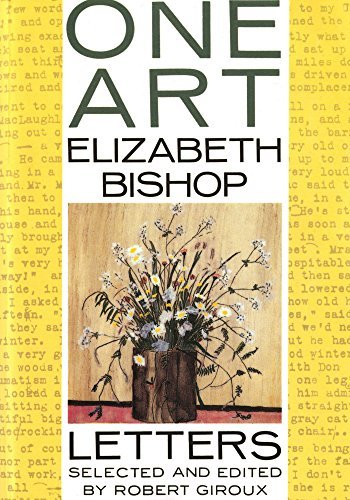
Elizabeth Bishop page on Amazon*
. . . . . . . . . . .
Florida
The state with the prettiest name,
the state that floats in brackish water,
held together by mangrove roots
that bear while living oysters in clusters,
and when dead strew white swamps with skeletons,
dotted as if bombarded, with green hummocks
like ancient cannon-balls sprouting grass.
The state full of long S-shaped birds, blue and white,
and unseen hysterical birds who rush up the scale
every time in a tantrum.
Tanagers embarrassed by their flashiness,
and pelicans whose delight it is to clown;
who coast for fun on the strong tidal currents
in and out among the mangrove islands
and stand on the sand-bars drying their damp gold wings
on sun-lit evenings.
Enormous turtles, helpless and mild,
die and leave their barnacled shells on the beaches,
and their large white skulls with round eye-sockets
twice the size of a man’s.
The palm trees clatter in the stiff breeze
like the bills of the pelicans. The tropical rain comes down
to freshen the tide-looped strings of fading shells:
Job’s Tear, the Chinese Alphabet, the scarce Junonia,
parti-colored pectins and Ladies’ Ears,
arranged as on a gray rag of rotted calico,
the buried Indian Princess’s skirt;
with these the monotonous, endless, sagging coast-line
is delicately ornamented.
Thirty or more buzzards are drifting down, down, down,
over something they have spotted in the swamp,
in circles like stirred-up flakes of sediment
sinking through water.
Smoke from woods-fires filters fine blue solvents.
On stumps and dead trees the charring is like black velvet.
The mosquitoes
go hunting to the tune of their ferocious obbligatos.
After dark, the fireflies map the heavens in the marsh
until the moon rises.
Cold white, not bright, the moonlight is coarse-meshed,
and the careless, corrupt state is all black specks
too far apart, and ugly whites; the poorest
post-card of itself.
After dark, the pools seem to have slipped away.
The alligator, who has five distinct calls:
friendliness, love, mating, war, and a warning–
whimpers and speaks in the throat
of the Indian Princess.
. . . . . . . . . . .
*This is an Amazon Affiliate link. If the product is purchased by linking through, Literary Ladies Guide receives a modest commission, which helps maintain our site and helps it to continue growing!
The post 8 Iconic Poems by Elizabeth Bishop appeared first on Literary Ladies Guide.
January 7, 2020
Grazia Deledda
Grazia Maria Cosima Damiana Deledda (September 1871 – August 15, 1936), more commonly known as Grazia Deledda, was an Italian writer best known for being the first Italian woman to receive the Nobel Prize in Literature (1926).
She was praised “for her idealistically inspired writings which with plastic clarity picture the life on her native island and with depth and sympathy deal with human problems in general.”
Early life
Deledda was born in Nuoro, Sardinia, the second-largest island in the Mediterranean sea. Her parents, Giovanni Antonio Deledda and Francesca Cambosu Pereleddu, were a respectable middle-class couple. They started educating Deledda in literature at a very young age.
After attending elementary school, she stopped formerly attending school at the age of eleven, as a guest of one of her relatives started to privately tutor her. It wasn’t long before she discovered her passion for writing, and she continued to independently study literature after being inspired by Sardinian peasants and their challenging lives.
. . . . . . . . . .
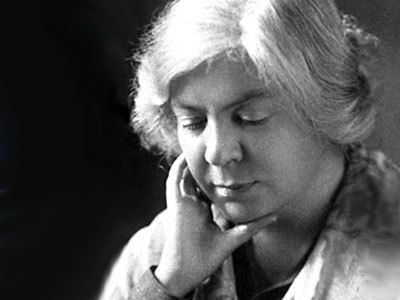
. . . . . . . . . .
The start of a writing career
Deladda’s first published work was Nell’azzurro, published in 1890. She also he published several pieces in L’Ultima Moda when the fashion magazine was still publishing prose and poetry.
Deledda was only twenty-one years old when she wrote and published her first novel, Fiori di Sardegna (Flowers of Sardinia), in 1892. Four years after she published her first novel, Paesaggi Sardi was published in 1896.
Her work shed light on the harsh realities in the lives of individuals, and wove in imaginary and autobiographical elements. Her writing reflected her critical views of social values and norms and how they victimized ordinary people.
Deladda’s family grew unsupportive of Deledda’s writing. She was unfazed by their lack of support, and continued to produce works reflecting her beliefs, no matter how controversial.
. . . . . . . . . .
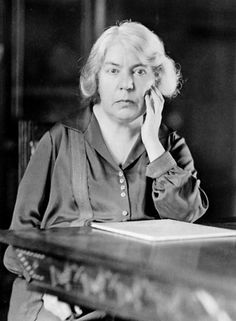
. . . . . . . . . .
Family life and rise to fame
Deledda met Palmiro Madesani, a functionary of the Ministry of Finance, in Cagliari in October of 1899. The two married in 1900 and moved to Rome.
After the publication of Anime Oneste in 1895, II vecchio della montagna in 1900, and the many works she collaborated on with magazines such as La Sardegna, Piccola Rivista, and Nuova Antologia, her work began to gain recognition.
While her writing career was taking off, she had two sons, Franz and Sardus, and lived a rather quiet life. She worked efficiently, as on average, she published a novel per year.
In 1903, Deledda published her most successful work to date. Elias Portolu officially established her career as a writer. She began successfully writing novels and theatrical works, such as Cenere (1904), L’edera (1908), Sino al confine (1910), Colombi e sparvieri (1912), and more.
Cenere, was actually the inspiration for a silent movie with Eleonora Duse, a well-known Italian stage actress. It happened to be the only time that Duse appeared in a film.
. . . . . . . . . .
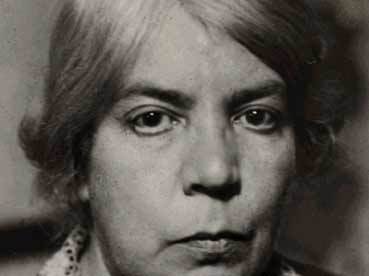
14 Women Who Won the Nobel Prize in Literature
. . . . . . . . . .
The Nobel Prize in Literature
In 1926, Deledda made history as the first Italian recipient of the Nobel Prize in Literature after being nominated by Henrick Schuck, a member of the Swedish Academy. When learning that she would be awarded the prestigious prize, Deledda’s response was “Gia!” (“Already!”)
Almost exactly one year after Benito Mussolini dropped the charade of constitutional rule in favor of fascism, Deledda received the Nobel Prize. He insisted on giving her a portrait of himself and signed it with “profound admiration.” In the midst of her heightened fame, many journalists and photographers visited her home, hoping to learn more about this prolific writer.
Deledda was deeply passionate about writing and was strict about dedicating a few hours of writing to her routine. Her daily schedule was exactly the same throughout the entire week. She started her day with a late breakfast, read for a few hours, had lunch and a nap, and ended her day with a few hours of writing.
She was extremely fond of her pet crow, Checcha. He often became agitated with the huge crowd of photographers and visitors constantly stopping by Deledda’s home. She would often be quoted as saying “If Checcha has had enough, so have I.”
. . . . . . . . . .
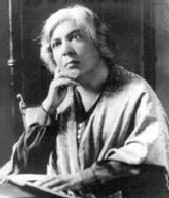
. . . . . . . . . .
Staying positive through hard times
Deledda continued writing as she grew older. In her later yers, she created two collections of short stories titled La Casa del Poeta and Sole d’Estate. Her work often expressed a positive view of life despite her own suffering from painful illnesses.
She didn’t allow the her work to touch on her personal suffering, and instead, focused on the beauty that life had to offer. Most of her later works describe mankind and her faith in God in beautiful terms.
Deledda’s work reflected on the life, customs, and traditions of the Sardinian people and used geographical descriptions and detail in her work. Many of her characters are social outcasts who struggle with loneliness, much like the Sardinian peasants that inspired her passion for writing as a young girl.
. . . . . . . . . .
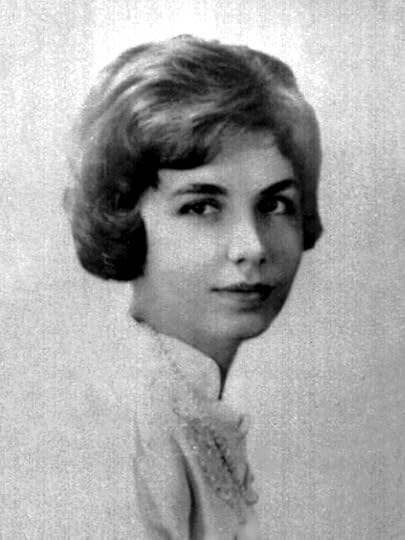
. . . . . . . . . .
Themes in Deledda’s work
In Deledda’s novels, there are connections between people and places and between feelings and the environment. One can often recognize the influence of verism, the artistic preference for everyday subject matter, as opposed to the heroic or legendary.
Her work also depicts decadentism, an Italian artistic style based on the Decadent movement in the arts in nineteenth-century France and England, especially the works of Gabriele D’Annunzio.
Deledda’s themes of women’s pain and suffering rather than on their autonomy, didn’t help to gain her much recognition as a feminist writer.
. . . . . . . . . . .
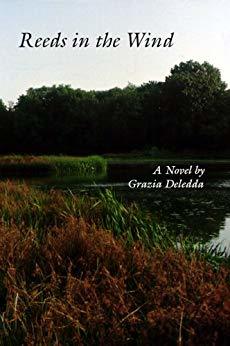
Grazia Deledda page on Amazon*
. . . . . . . . . .
Death and legacy of Grazia Deledda
Deledda died of breast cancer in Rome in 1936, at the age of sixty-four. Just before her death, she was able to complete her final novel, La Chiesa della Solitudine (1936), a semi-autobiographical story about a young Italian woman who learns she has breast cancer. After her death, her completed manuscript of the novel Cosima was discovered and published in 1937
Her work has since been praised by Luigi Capuana and Giovanni Verga, as well as many other writers and critics. Her birthplace and childhood home located in Nuoro was created into a museum in the writer’s honor called Museo Deleddiano di Nuoro, consisting of ten rooms used to reconstruct stages of her life.
To this day, Deledda remains the only Italian woman to have won the Nobel Prize for Literature.
. . . . . . . . . .
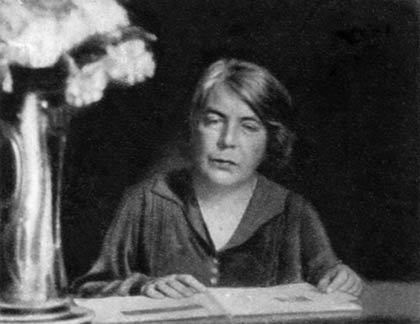
Major works
From Stella D’Oriente and Nell’azzurro, both published in 1890, through a number of posthumously published works, it would be unwieldy to list all of Deledda’s works here. See a complete listing of her works on Wikipedia.
Biographies
A Self-Made Woman: Biography of Nobel-Prize-Winner Grazia Deledda by Carolyn Balducci (1975)
Grazia Deledda: A Legendary Life (Troubador Italian Studies) by Martha King (2005)
More Information
Wikipedia
The Famous People
Britannica
The Nobel Prize
With Profound Admiration: Grazia Deledda, Nobel Laureate
. . . . . . . . . .
Skyler Isabella Gomez is a 2019 SUNY New Paltz graduate with a degree in Public Relations and a minor in Black Studies. Her passions include connecting with her Latin roots by researching and writing about legendary Latina authors.
. . . . . . . . . .
*This is an Amazon Affiliate link. If the product is purchased by linking through, Literary Ladies Guide receives a modest commission, which helps maintain our site and helps it to continue growing!
The post Grazia Deledda appeared first on Literary Ladies Guide.
December 21, 2019
Elizabeth Bishop
Elizabeth Bishop (February 8, 1911 – October 6, 1979) was a noted American poet. Born in Worcester, Massachusetts, Bishop won numerous awards during the course of her career, including the Pulitzer Prize, and her reputation as a significant American poet has only grown since her death. Her most iconic poems include “The Fish,” “One Art,” “A Miracle for Breakfast,” and “Sestina.”
Bishop wasn’t a particularly prolific poet, preferring to spend long periods of time revising her work; she wrote just over one hundred poems. Her poetry is characterized by keen observations of the physical world and a serene yet searching attitude. Many of her poems grapple with themes of loss and the struggle to find one’s place in the world.
Early life and education
Elizabeth Bishop’s experiences of loss began early. Her father died when she was an infant; her mother suffered from severe mental illness and was committed to an institution when Bishop was five. She was raised by her maternal grandparents in Nova Scotia for several years before being taken in by her paternal grandparents, who brought her back to Massachusetts.
Bishop was unhappy living with her grandparents. Recognizing her sadness, they sent her to live with her mother’s oldest sister. Bishop’s aunt was the first to expose her to poetry, especially the Victorian poets, including Alfred, Lord Tennyson, and Elizabeth Barrett Browning.
Because her grandparents were wealthy and paid for her education, Bishop was able to attend the elite Walnut Hill School, where she studied music. It was at Walnut Hill that her first poems were published in a student magazine.
Bishop then attended Vassar College in Poughkeepsie, New York, studying music with the intention of becoming a composer. Performance anxiety redirected her toward a degree in English. As the editor-in-chief of Vassar’s yearbook, Bishop and a group of friends — including her classmate, future novelist Mary McCarthy — founded the literary magazine Con Spirito. Though short-lived, it was able to compete with Vassar’s established magazine. Bishop graduated with a bachelor’s degree in 1934.
. . . . . . . . . .
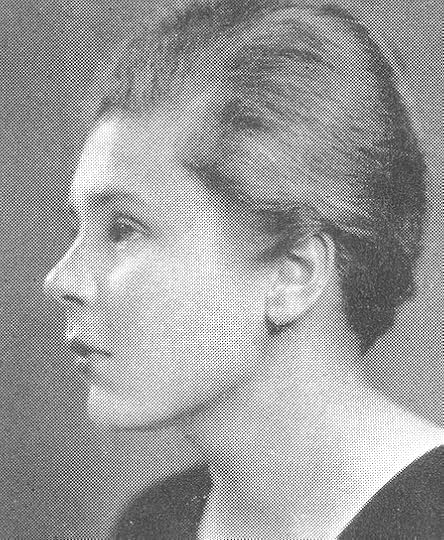
1934 Vassar College yearbook portrait
. . . . . . . . . .
Literary friendships and correspondences
While Bishop studied English, a librarian introduced her to the poet Marianne Moore. The two corresponded extensively, and Moore became Bishop’s mentor and lifelong friend. She helped publish Bishop’s poetry in the anthology Trial Balances, in which established poets promoted new and unknown poets. Their friendship lasted until Moore’s death in 1972.
In 1947, poet and critic Randall Jarrell introduced Bishop to Robert Lowell, and they became close friends. Bishop and Lowell often wrote poems inspired by the other’s work. Lowell’s famous “Skunk Hour,” for example, was inspired by Bishop’s “The Armadillo,” and Bishop’s “North Haven” paid homage to Lowell after his death.
Bishop had numerous correspondents over her lifetime. She found letter-writing a joyous activity and an extension of her poetry. Over five hundred of her letters to Moore, Lowell, and others have been collected in the volume One Art: Letters.
World travels and a poet’s beginnings
With an inheritance from her deceased father’s estate, Bishop was able to travel widely after graduating from Vassar. She first lived in New York City for several years, and then visited Italy, Ireland, France, Spain, and North Africa. Bishop described many of the places she lived in her poems, such as in “Questions of Travel” and “Over 2000 Illustrations and a Complete Concordance.”
In 1938, Bishop purchased a home in Key West, Florida with a friend from Vassar. There, she began work on her first poetry collection, North and South. The book was published in 1946; it won the Houghton Mifflin prize for poetry.
1951 brought Bishop the opportunity to embark on deeply impactful travels. With a travel fellowship of $2,500 she was awarded by Bryn Mawr College, she circumnavigated South America by boat. Bishop arrived in Santos, Brazil in November of 1951; she intended to stay for only two weeks, but instead stayed for fifteen years.
Life and love in Brazil
Bishop’s relationship with architect Lota de Macedo Soares is what kept her in Brazil. When Bishop was sick during her initial two-week visit, Soares nursed her back to health, effectively winning over the poet. Soares was descended from a prominent and political family; though not trained as a designer or architect, she worked as both. The couple lived together in Pétropolis, near Rio de Janeiro.
Though it began blissfully, the women’s relationship deteriorated after about fourteen years. Their later years together were marked by recurring bouts of Bishop’s alcoholism and Soares’s depression, making both were prone to start volatile fights.
Bishop moved back to New York to teach in 1966. Her alcoholism eventually led to infidelity. Soares visited Bishop in 1967; on the first day of their reunion, she took her own life, possibly due to stress from work and the couple’s failing relationship.
Bishop wasn’t forthcoming about the nature of her relationship with Soares, and she never came out as a lesbian. Much of what’s known about their relationship comes from Bishop’s letters to professor Samuel Ashley Brown. Their relationship was memorialized in the book Flores Raras e Banalíssimas (in English, Rare and Commonplace Flowers) by Carmen Lucia de Oliveira, and the 2013 film Reaching for the Moon.
. . . . . . . . . .

. . . . . . . . . .
Building a literary identity
While living in Brazil, Bishop published her second collection of poems, North and South — A Cold Spring. The collection appeared in 1955 and included her first book, plus eighteen additional poems that made up the Cold Spring section. Bishop won the Pulitzer Prize for this volume the following year.
It would be another ten years before Bishop published any new poems. Her next book was 1965’s Questions of Travel, and many of the poems in this collection were inspired by her life in Brazil, such as “Arrival at Santos” and “The Riverman.”
Bishop’s contemporaries, including Robert Lowell and Anne Sexton, among others, were writing confessional poetry, but she avoided personal disclosure in her work. Preferring a more objective style, the narrative voices in her poems are often distant from the subject matter, describing their observations in precise yet impersonal detail. In the March 6, 2017 issue of The New Yorker, an article titled “Elizabeth Bishop’s Art of Losing” (reviewing A Miracle for Breakfast: The Art of Elizabeth Bishop, a biography of the poet by Megan Marshall) bears out this general assessment of her work:
“Except perhaps for her mentor, Marianne Moore, it is hard to name a poet whose work so thoroughly disinvites private scrutiny. Admirers of Bishop’s early work Moore, Robert Lowell, Randall Jarrell—praised its cool objectivity, its calm impersonality, what Moore described as its ‘rational considering quality’ (hardly the usual praise for poetry), its ‘deferences and vigilances.’ What the young poet deferred to was poetic form and an increasingly old-fashioned sense of manners and discretion. She was vigilant in giving nothing of herself away.”
Bishop’s next major publication was her Collected Poems, published in1969. The volume included her previously published poetry, plus eight new poems. It won the National Book Award. The following book and the last to be published in Bishop’s life, Geography III, contains many of her most anthologized poems, such as “One Art” and “In the Waiting Room.”
Bishop continued to reject confessional poetry when this collection came out in 1977, but some sparse personal details began to surface, hinting at her mother’s illness and her grief after losing Soares. Bishop won the Neustadt International Prize for Literature for Geography III, which no woman had won before and no American has won since.
Not a “Woman Poet”
Bishop had a fraught relationship with how gender and sexuality related to her career as a poet. She refused the labels “female poet” or “lesbian poet,” preferring her work to speak for itself rather than be overshadowed by her gender or sexual orientation.
Being an intensely private person, Bishop was never involved in the women’s movement and shared intimate details of her life with few people. As a result, those around her thought she was hostile to the women’s movement. However, Bishop stated in a 1978 interview with The Paris Review that although she refused to be published in women-only anthologies, she did consider herself a feminist.
. . . . . . . . . . .

Elizabeth Bishop page on Amazon*
. . . . . . . . . . .
Awards, accolades, and later years
When her father’s inheritance began dwindle in the 1970s, Bishop started lecturing at various universities. She taught at Harvard for several years, then at New York University, and finally the Massachusetts Institute of Technology.
During her lifetime, she may not have been famous per se, but her work was recognized and well rewarded. Starting in 1945 with the Houghton Mifflin award for her first collection, she went on to win a Guggenheim Fellowship, the Shelley Memorial Award, an Academy of American Poets Fellowship, the National Book Award for Poetry, the National Book Critics Circle Award, and many others, not the least of which was the Pulitzer Prize mentioned earlier.
In 1979, Bishop died of a cerebral aneurysm in her apartment in Boston, at the age of 68. Her partner of some eight years, Alice Methfessel, became her literary executor.
Ultimately, Elizabeth Bishop achieved what she had hoped for — a reputation as a great American poet, who just happened to be a woman.
. . . . . . . . . . .
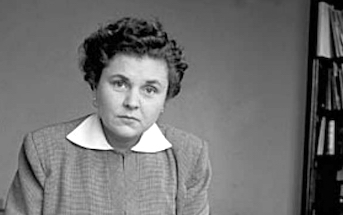
More about Elizabeth Bishop
Major Works
North & South ( 1946)
Poems: North & South / A Cold Spring (1955)
A Cold Spring (1956)
Questions of Travel (1965)
The Complete Poems (1969)
Geography III (1976)
The Complete Poems: 1927–1979 (1983)
Poems, Prose and Letters by Elizabeth Bishop (2008)
Poems (2011)
Biography, letters, and criticism
The Collected Prose (1984)
One Art: Letters (1994)
Exchanging Hats: Elizabeth Bishop Paintings, (1996)
Words in Air: The Complete Correspondence Between Elizabeth Bishop and Robert Lowell (2008)
Conversations with Elizabeth Bishop (1996)
A Miracle for Breakfast: The Art of Elizabeth Bishop by Megan Marshall (2017)
Love Unknown: The Life and Worlds of Elizabeth Bishop by Thomas Travisano (2019)
Documentary
Welcome to this House (2015)
More information and sources
Wikipedia
Poets
Poetry Foundation
A Conversation with Elizabeth Bishop
Alone with Elizabeth Bishop
It’s Always a Good Time to Revisit the Brilliance of Elizabeth Bishop
Visit and research
Elizabeth Bishop House and Society of Nova Scotia
The Elizabeth Bishop Papers at Vassar College
Contributed by Johanna Shaw. Johanna Shaw is a writer currently pursuing an M.A. in English at the University at Albany, SUNY. Her essays have appeared in bioStories, Trolley, Gravel, and Glass Mountain. When not writing or studying, Johanna can be found playing Chopin nocturnes at her piano, obsessing over literary modernism, or somewhere deep within a used bookstore.
. . . . . . . . . . .
*This is an Amazon Affiliate link. If the product is purchased by linking through, Literary Ladies Guide receives a modest commission, which helps maintain our site and helps it to continue growing!
The post Elizabeth Bishop appeared first on Literary Ladies Guide.
December 16, 2019
Seven Gothic Tales by Isak Dinesen (1934)
Seven Gothic Tales by Isak Dinesen (1885 – 1962) is a masterful collection of short stories by the Danish author best known for Out of Africa (1937), a now-controversial memoir of her life as a coffee plantation owner in the colonized Kenya of the 1920s.
In 1931, the plantation’s fortunes collapsed, and she returned to her family home in Denmark from Kenya. Karen Christenze Dinesen was the author’s original name, and she was known as Baroness Karen von Blixen-Finecke, or simply Karen Blixen, during her disastrous marriage. Upon her return to her home country, she began writing in earnest. In 1934, Seven Gothic Tales, a collection of stories she had written in English, was published.
A surprise success by a Danish author in the U.S.
Seven Gothic Tales was a surprise success in the U.S., even becoming a Book-of-the-Month-Club selection. It set the stage for the thematic character of her fiction, which was an amalgam of the real and the mythic, and incorporating elements of Persian and West Indian exotica. Storytelling is actually a part of some of her stories — that is, stories are told within the stories; and characters are sometimes archetypes rather than fully fleshed-out people. She wrote of her work:
“Reality had met me … in such an ugly shape, that I have no wish to come into contact with it again. Somewhere in me a dark fear was still crouching and I took refuge within the fantastic like a distressed child in his book of fairy tales …
I belong to the ancient, idle, wild, and useless tribe, perhaps I am even one of the last members of it, who, for many thousands of years, in all countries and parts of the world, has, now and again, stayed for a time among the hard working honest people in real life, and sometimes has thus been fortunate enough to create another sort of reality for them, which, in some way or another, has satisfied them. I am a storyteller … ”
The use of the term gothic
Commenting on the designation of these tales as gothic, the Karen Blixen Museum offers this insight:
“Some of the foremost Anglo-Saxon authors of 19th century had written Gothic tales and novels: Robert Louis Stevenson, Charlotte Brontë, Jane Austen, Edgar Allan Poe and William Faulkner – all of whom feature in Karen Blixen’s private library. Karen Blixen adopted a very free approach to the traditional Gothic genre, but she worked within a number of its parameters.
The themes of Gothic novels include: the collapse of feudal aristocracy; young heroes and heroines held captive in ancient castles and convents by powerful and manipulative men; the tyranny of the past stifling the hopes of the present generation. Women writers were especially fond of the genre – presumably because its traditional themes of oppression and persecution went hand-in-hand with women’s experience of lack of freedom and independence in a patriarchal society.”
Endeavoring to describe the indescribable
In her introduction to the 1934 Modern Library edition of Seven Gothic Tales, Dorothy Canfield Fisher endeavors to describe the unusual flavor, so to speak of the tales:
“Although solidly set in an admirably described factual background somewhere on the same globe we inhabit, in a past mostly no longer ago than sometime in the nineteenth century, although they are human beings, young men, maidens, old men, old women, they are unlike us and the people we know in books and in real life, because the attitude towards life which they have is different from ours, or from any attitude we have met in life or in books …
Where, you will ask yourself, puzzled, have I ever encountered such strange slanting beauty of phrase, clothing such arresting but controlled fantasy? As for me, I don’t know where.”
. . . . . . . . . .
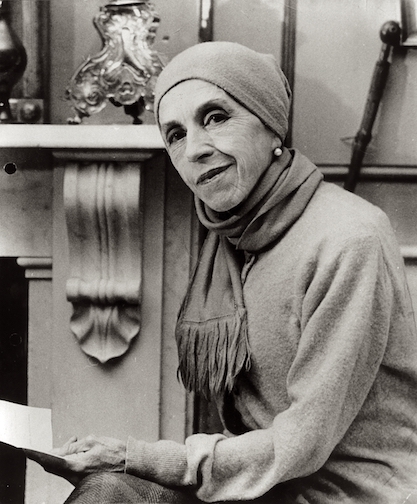
Learn more about Isak Dinesen
. . . . . . . . . .
The following 1934 review reflects the accolades the book received in the U.S., even as reviewers attempted to define the ineffable quality of the writing:
A 1934 review of Seven Gothic Tales
From the original review of Seven Gothic Tales by Isak Dinesen in The Salt Lake Tribune, April 29, 1934: One will find much difficulty in assaying this volume, in determining just wherein lies ints peculiar fascination. These Seven Gothic Tales, or novelettes, as they might be called have nothing of the manner or style of anything else being written contemporaneously.
There is an air of classicism about them, a suggestion of Bocaccio, of the German romantics, or even the richness of Scheherazade’s tales. Yet only a suggestion; they’re truly unlike anything else one can recall. The author takes us into a world peopled by characters that are strange to us, and who have a way of life that’s unfamiliar.
Filled with Danish history, lore, and legend
Isak Dinesen comes of an old Danish family, we are told, and while she chooses to write in English, it’s a Continental attitude of mind that’s revealed. Some of her tales are filled with Danish history, lore, and legend.
In “The Roads Round Pisa,” it is a young Danish nobleman who, seeking in a journey to Tuscany to learn something of the truth about himself, becomes a spectator at a curious chain of events. For this, as for any of the other tales, a proper preface might be found in the words of a character in “The Dreamers” — “It happened just as I tell it to you … You must take in whatever you can, and leave the rest outside. It is not a bad thing in a tale that you can understand only half of it.”
. . . . . . . . . .
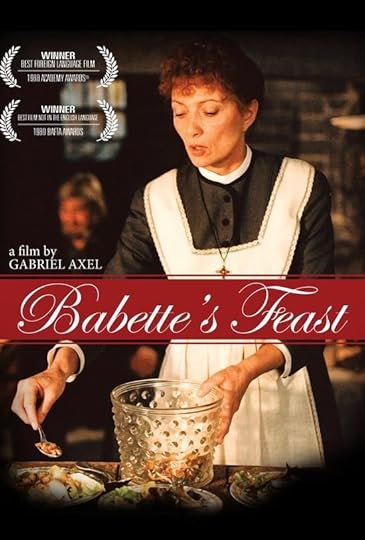
Babette’s Feast, the 1958 Short Story by Isak Dinesen and 1987 Film
. . . . . . . . . .
Slightly grotesque characters grip the imagination
While the actors in these tales are strange, slightly grotesque, and their experiences fantastic, they grip the imagination. The Gothic mood of the stories grows on us, and while we read we’re bound by the author’s spell, and see these people as she saw them, as though she held some secret vision that we may not share.
All of the tales are set back in previous century, and are intricate in structure, designed like some exquisite early mosaic. “The Dreamers,” full of mystical meaning, tells of the beautiful opera singer who, grieving the loss of her voice, gives up her personality also. She becomes more than one person, a woman who never grows old.
Peculiar qualities of family and romance
That is also the peculiar quality of the family in “The Supper at Elsinore.” Two brilliant sisters, like a “pair of spiritual courtesans,” still keep their admirers; the pirate brother who returns long after his death to call upon these two women who loved him in a strange tryst.
A tinge of eroticism marks most of the tales, most especially “The Monkey.” In this tale, a noble Prioress goes to strange lengths to arrange a marriage to save a dissolute nephew, and a small gray monkey plays a weird part. At dinner with the young woman he is to marry, the thoughts of Boris, the nephew, are described:
“He thought that she must have a lovely, an exquisitely beautiful skeleton. She would lie in the round like a piece of matchless lace, a work of art in ivory … he imagined that he might be very happy with her, that he might even fall in love with her, could he have her in her beautiful bones alone … Many human relations, he thought, would be infinitely easier if they could be carried out in the bones only.”
Delicate beauty of writing
In “The Deluge at Norderney,” the most arresting of the tales, the flood that destroyed a coast town of Holstein — coming in summertime, it assumed “the character of a terrible, grim joke” — becomes the setting for the stories of four people: a cardinal who wasn’t a cardinal, a half-mad spinster of the noble Nat-of-Dag, and two unusual young people. These four are revealed during the hours of the night while the waters rise to the loft where they take shelter.
More than the unexpectedness of these tales, with their startling grotesqueries and fantastic incident, is the delicate beauty of the writing. This mysterious Danish author has mastered an exquisite prose style.
. . . . . . . . . .
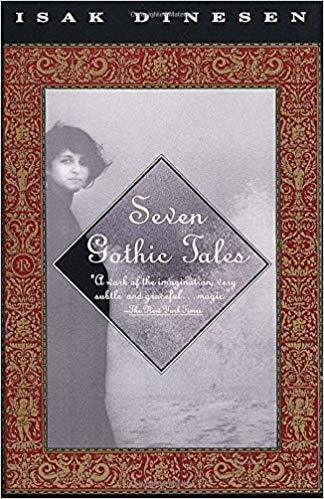
Seven Gothic Tales by Isak Dinesen on Amazon*
. . . . . . . . . .
More about Seven Gothic Tales by Isak Dinesen
Wikipedia
Reader discussion on Goodreads
Margaret Atwood on the Show-Stopping Isak Dinesen
. . . . . . . . . .
*This is an Amazon Affiliate link. If the product is purchased by linking through, Literary Ladies Guide receives a modest commission, which helps maintain our site and helps it to continue growing!
The post Seven Gothic Tales by Isak Dinesen (1934) appeared first on Literary Ladies Guide.
December 8, 2019
12 African-American Suffragists Who Shouldn’t be Overlooked
The women’s suffrage movement in the United States led to the establishment of the legal right for women to vote nationally when the 19th amendment was ratified 1920. Here we present twelve African-American suffragists whose contributions shouldn’t be overlooked, a mere fraction of those who should be acknowledged and honored.
As women’s suffrage gained momentum in the late nineteenth and early twentieth centuries, African-American women often were marginalized. Yet despite the odds, Black suffragists made important strides in the fight for voting rights. African-American women suffragists dealt with the political concerns of white suffragists who were aware that they needed the support of Southern legislators both on the state and federal levels.
In 1890, the National Woman Suffrage Association and the American Woman Suffrage Association merged to form the National American Woman Suffrage Association (NAWSA). NAWSA’s members excluded African-American women, believed that would gain them greater support. The view of women’s suffrage was thus narrowed, focusing primarily on white women.
Racism was as much an issue in the right to secure the vote for Black women as was sexism. Susan Goodier and Karen Pasternello, the authors of Women Will Vote: Winning Suffrage in New York State, observed:
“They [Black women] did not rely on white women to tell them they needed the right to vote; they began organizing for the franchise in New York State as early as the 1880s and, in spite of the racism they faced, they would actively seek their enfranchisement throughout the entire struggle. African-American women rarely separated the quest for the vote from the other activism in which they engaged.
Many Black women came to fear that white women would ‘devise something akin to an exclusionary ‘grandmother’s clause’ to keep Black women from voting once they won the vote. Some scholars argue that, in fact, ‘racist attitudes provided additional impetus” for Black women’s struggle.
Much of their activism and work for woman suffrage and women’s rights occurred as a fundamental component of their activities in clubs such as the Negro Women’s Business League or in the National Association of Colored Women’s Clubs or its affiliates …”
Though there were many obstacles in the way, African-American women fought tirelessly on all fronts secure the vote. Thanks to the devoted and determined women who participated in the women’s suffrage movement and helped it progress, women gained the right to make their voices heard through voting, at least on paper. The passage of the Nineteenth Amendment, unfortunately, didn’t end the fight for voting rights for all women, as we well know.
. . . . . . . . . .
Nannie Helen Burroughs (1871-1961)
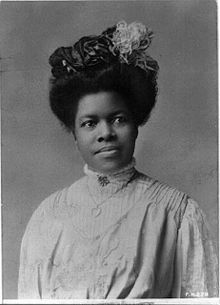
Nannie Helen Burroughs was born in north-central Virginia and later attended school in Washington, D.C., where she graduated with honors. Due to racial bias, she was unable to find a job, neither in the D.C. schools, nor the federal government.
She relocated to Philadelphia and worked as a secretary for the Christian Banner, the National Baptist Convention’s paper. This experience motivated her to advocate for civil rights for African-Americans and women. One result was her founding the National Training School for Women and Girls.
Burroughs believed women should be given a fair opportunity to get an education and job training. She also discussed the need for Black and white women to unite in the fight voting rights; she strongly believed that suffrage for African-American women was necessary to protect their interests. In society which was often racist, she believed a Black woman’s vote was an essential antidote to racial and gender discrimination.
She left behind an impressive legacy, which included assisting Black women of the suffragist movement when they went through hard times. She’s also one of the most quoted suffragists of her time. One of her most memorable quotes was “Having standards isn’t really for anyone else. You should want to have them for yourself.”
. . . . . . . . . .
Mary Ann Shadd Cary (1823 – 1893)
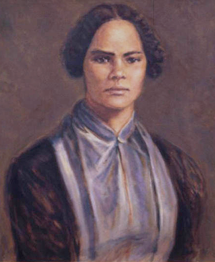
Mary Ann Shadd Cary was born into a family that lived to help others. As she grew up, her family was actively helping those seeking to escape slavery by participating in the Underground Railroad. This became ever more urgent after the Fugitive Slave Act was passed by Congress in 1850. Her drive toward social justice followed her into adulthood, as she became involved in the women’s suffrage movement among many other causes.
While in Washington D.C, she became a member of the National Woman Suffrage Association and spoke at their convention in 1878. She worked alongside Elizabeth Cady Stanton and Susan B. Anthony to testify before the House Judiciary Committee and founded the Colored Women’s Progressive Franchise in 1880 to push for equal rights for women.
Cary strongly advocated for the Fourteenth and Fifteenth Amendments at a House Judiciary Committee hearing. The Fourteenth Amendment defined citizenship and the Fifteenth Amendment gave African-American men the right to vote. Though she supported the Fifteenth Amendment, she was vocal in her criticism of this amendment that left women out. Her hard work and dedication paid off when she testified before the U.S. House Judiciary Committee on Women and the Vote, after which she registered to vote in Washington, D.C.
. . . . . . . . . .
Coralie Franklin Cook (1861 – 1942)
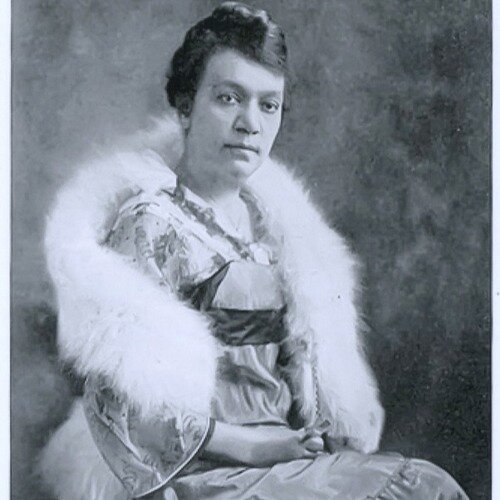
Coralie Franklin Cook was an outspoken leader in the African-American community, best known in West Virginia and Washington, D.C. She was a very powerful public speaker, a professor, appointed Board of D.C, a leader in the Black women’s club movement.
She focused primarily on issues of women’s suffrage and education. She was an active member of the National American Woman Suffrage Association and took part in participating in the association’s inner circles. The NAWSA hierarchy acknowledged her hard work, though rather patronizingly praised her as an educated, professional, middle-class woman who she matched the intelligence of Elizabeth Cady Stanton.
Cook was disheartened by the reality that African-American women weren’t a priority for white women active in the suffrage movement and insisted that they do not ignore the political rights of the less fortunate.
She even addressed Susan B. Anthony, saying “…and so Miss Anthony, on behalf of the hundreds of colored women who wait and hope with you for the day when the ballot shall be in the hands of every intelligent woman; and also in behalf of the thousands who sit in darkness and whose condition we shall expect those ballots to better, whether they be in the hands of white women or Black, I offer you my warmest gratitude and congratulations.”
. . . . . . . . . .
Anna Julia Cooper (1858 – 1964)
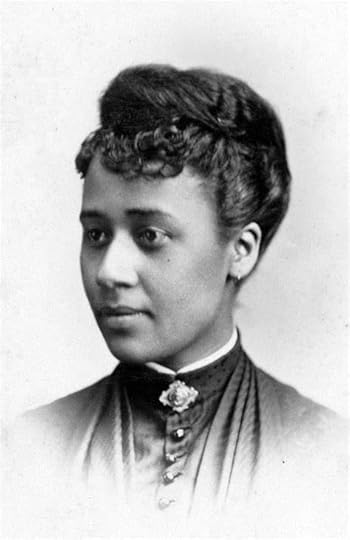
Anna Julia Cooper (1858 – 1964) was born to a house slave named Hannah Stanley Haywood in Raleigh, North Carolina. In the course of her long life, she lived through slavery, the Civil War, Reconstruction, Jim Crow, and the early Civil Rights movement. She also lived to see the fruits of the women’s suffrage movement.
Not only was Cooper an author and educator, but she was also a social commentator. She participated in numerous conferences, including Woman Suffrage Congress in 1893, where she delivered formidable speeches focusing on racial and gender equality and education. She was among one of the most dedicated of African-American women suffragists.
Cooper encouraged women of color to push back against the belief that a Black man’s experiences and needs were the same as theirs. They needed a voice — and a vote — of their own. She became known for her statement, “Only the BLACK WOMAN can say when and where I enter in the quiet undisputed dignity of my womanhood, without violence or special patronage; then and there the whole Negro race enters with me.”
. . . . . . . . . .
Charlotte Forten Grimké (1837 – 1914)
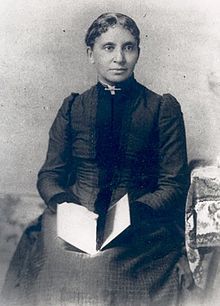
Charlotte Forten Grimké married Presbyterian minister Francis J. Grimké, making her the aunt of Harlem Renaissance poet and journalist Angelina Weld Grimké. She was an abolitionist and diarist who grew up in a prominent and abolitionist family of color in Philadelphia, Pennsylvania.
Grimké was an influential activist and civil rights leader. In 1892 she formed the Colored Women’s League in Washington, D.C. as a service-oriented club working to promote unity, social progress, and other interests of the Black community. She contributed much to the formation of the National Association of Colored Women (NACW) in 1896.
Even as she grew older, she continued to speak publicly on abolitionist issues and also arranged lectures for other prominent speakers. Grimké continued to stay an active force advocating for the rights of African-Americans until the time of her death.
. . . . . . . . . .
Frances Ellen Watkins Harper (1825 – 1911)
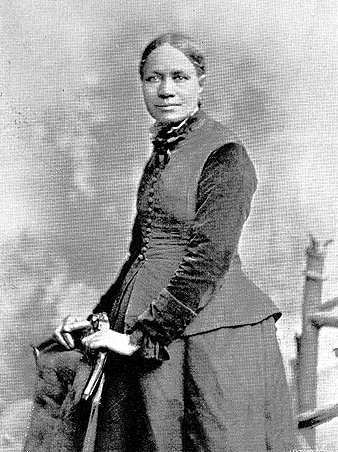
Frances Ellen Watkins Harper combined her talents as a writer, poet, and public speaker with a deep commitment to abolition and social reform. She was an avid supporter of progressive causes both before and after the American Civil War, including prohibition and women’s suffrage.
Her life changed after a trip to the South when she witnessed the mistreatment of Black women during Reconstruction. She gave lectures on the need for racial equality along with women’s rights. Years later, she founded the YMCA Sunday Schools and become the leader in the Woman’s Christian Temperance Union. She also joined the American Equal Rights Association and the American Woman’s Suffrage Association to help fight for racial and women’s equality.
In 1866, Harper gave a speech demanding equal rights for everyone, including Black women, before the National Woman’s Rights Convention. She stated:
“We are all bound up together in one great bundle of humanity, and society cannot trample on the weakest and feeblest of its members without receiving the curse in its own soul. You tried that in the case of the Negro … You white women speak here of rights. I speak of wrongs. I, as a colored woman, have had in this country an education which has made me feel as if I were in the situation of Ishmael, my hand against every man, and every man’s hand against me …”
. . . . . . . . . . .
Adella Hunt Logan (1863 – 1915)
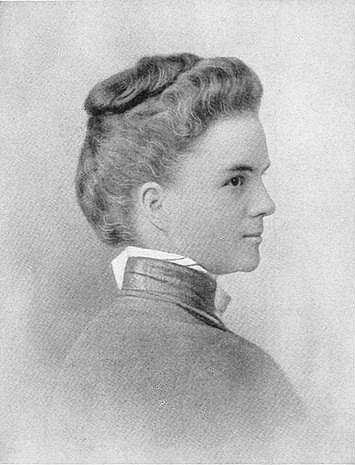
Adella Hunt Logan was an African-American writer, educator, administrator, and suffragist. She was active in advocating for education and voting rights for women of color.
The National American Woman Suffrage Association held a convention in Atlanta in 1895. At the time, the organization was having a difficult time gaining support for a constitutional amendment on women’s suffrage, so they turned to southern states for help. NAWSA appealed to white southerners because it observed segregation and had previously barred African-American men and women from their conventions.
Around this time, Mississippi and other southern states had passed a constitution to disenfranchise Black citizens through 1908. Although the atmosphere was extremely unwelcoming to African-Americans, Logan attended the convention. She was inspired by a speech by Susan B. Anthony and became a member shortly after.
She began writing for NAWSA’s newspaper, The Woman’s Journal, and contributed to other magazines (including NAACP’s The Crisis) to promote women’s suffrage. Logan also campaigned for women’s voting rights in western states that had statewide suffrage, and argued that African-Americans should have the right to vote in order to have a say in education legislation.
Though her life ended sadly in depression and suicide, Logan’s contributions to the cause of suffrage were significant.
. . . . . . . . . .
Gertrude Bustill Mossell (1855 – 1948)
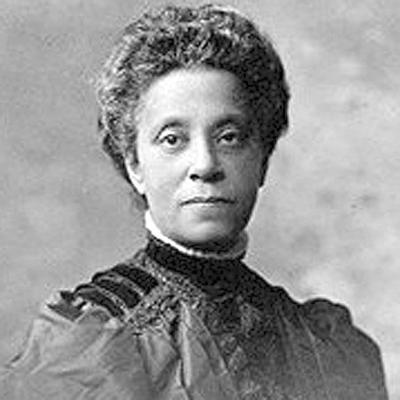
Gertrude Bustill Mossell was a journalist, author, teacher, activist, and suffragist. She was able to utilize her skills as a writer to give a voice to the ideas of Black women who advocated for women’s suffrage.
Although Mossell came from a comfortable family, she chose to give a voice to African-American women suffragists who were often ignored. She began supporting the women’s suffrage movement when she began writing a woman’s column for T. Thomas Fortune’s Black newspaper, The New York Freeman. Her first article for the column was “Woman Suffrage,” which encouraged Black women to educate themselves about the movement and get involved to work for its success.
She also encouraged women to become journalists to write articles for numerous publications and share their views on current events. Mossell personally favored the Constitutional amendment route favored by Susan B. Anthony and Elizabeth Cady Stanton over the state-by-state method favored by Lucy Stone.
. . . . . . . . . .
Josephine St. Pierre Ruffin (1842 – 1924)
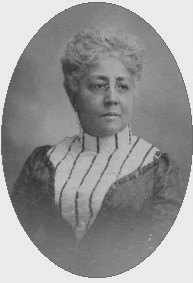
Josephine St. Pierre Ruffin was a journalist, publisher, civil rights leader, editor of the Woman’s Era, and suffragist. She was best known for creating the club movement that encouraged Black women to fight for civil rights and suffrage.
Ruffin joined Julia Ward Howe and Lucy Stone to create the American Woman Suffrage Association in Boston. She became the first Black member of the New England Women’s Club, a group created by Howe, Stone, and other AWSA members, when she joined in the mid 1890s.
After Massachusetts granted women the right to vote in School Committee elections, she became the founder of the Massachusetts School Suffrage Association. Here, she advocated for women’s suffrage and candidacy for office. Years later, she became the President of the West End League of the Massachusetts Woman Suffrage Association.
. . . . . . . . . .
Mary B. Talbert (1866 – 1923)
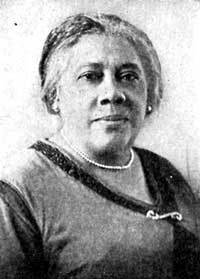
Mary B. Talbert (also known as Mary Burnett Talbert) was an American orator, reformer, activist, and suffragist called “the best known Colored Woman in the United States,” as she was one of the most distinguished African-Americans of her time.
In 1905, W.E.B Dubois, John Hope, and thirty others secretly met in Talbert’s home to discuss the civil rights resolution that eventually led to the founding of the Niagara Movement. Dubois stated: “We want full manhood suffrage and we want it now …” Though Talbert was unable to become a member of the Niagara Movement, it served its purpose as the forerunner of the NAACP. The latter allowed her to become a vice president and a board member of the organization from 1919 until her death.
Talbert used the media of the day to educate the public about suffrage and persuade African-American women to fight for their right to vote. In a 1915 article in The Crisis she wrote, “It should not be necessary to struggle forever against popular prejudice, and with us as colored women, this struggle becomes two-fold, first because we are women and second because we are colored women.”
. . . . . . . . . .
Mary Church Terrell (1863 – 1954)
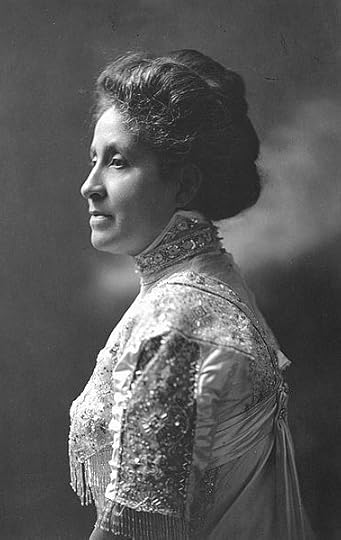
Mary Church Terrell, the well-known activist for civil rights, was one of the first African-American woman to earn a college degree. Her interest in suffrage began when she was an Oberlin College student, and she continued her involvement in many aspects of activism into her later years.
As a member of NAWSA, Terrell created a group of African-American women to combat racial issues such as lynching, educational reform, and more.
Terrell gave a speech called “The Progress of Colored Women” at a NAWSA session in Washington, D.C. as a call for the association to fight for Black women’s lives. The speech received a great response from the association which led Terrell to serve as their unofficial African-American ambassador. She went on to give other addresses aimed at uniting Black people in various causes.
Terrell led the Delta Sigma Theta Sorority women of Howard University in a suffrage rally, and became the first Black woman to hold a position in the District of Columbia Board of Education.
. . . . . . . . . .
Ida B. Wells (1862 – 1931)
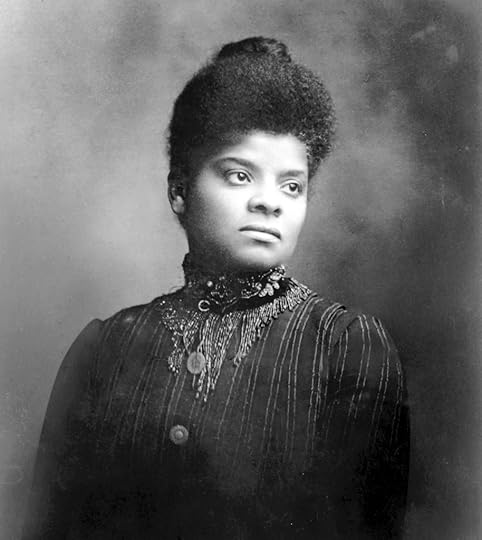
Ida B. Wells (also known as Ida B. Wells-Barnett) was an intrepid journalist, activist, and suffragist. She started her advocacy for women’s suffrage while also working for other forms of social and racial justice.
In 1913 Wells created the Alpha Suffrage Club, a women-focused political group. The club’s work laid bare that truth that many Black women didn’t have sufficient education to take part in politics and the electoral process. This inspired her to reach out to other clubs that catered to Black women to help remedy this situation.
This same year, she also traveled to the first suffrage parade in Washington, D.C. organized by NAWSA. At the parade, she and sixty Black women were told to march in the back. To this, Wells responded “Either I go with you or not at all. I am not taking this stand because I personally wish for recognition. I am doing it for the future benefit of my whole race.”
Wells’ great-granddaughter, Michelle Duster, described her:
“… as an African-American woman who battled both racism and sexism at a time when it was extremely dangerous to speak out… She used her gift of writing, speaking and organizing to help shed light on injustice. She was extremely brave and held steadfast to her convictions despite being criticized, ostracized and marginalized by her contemporaries.”
More African-American Suffragists worth a mention
Sojourner Truth (1797 –1883)
Charlotte Vandine Forten (1785 –1884)
Harriet Forten Purvis (1810 – 1875)
Margaretta Forten (1806 – 1875)
Sarah Remond (1826 – 1887)
Hallie Quinn Brown (1845 – 1949)
Charlotta (Lottie) Rollin (1849 – ?)
Fannie Barrier Williams (1855 – 1944)
Janie Porter Barrett (1865 – 1948)
Naomi Talbert (Anderson; 1863 – ?)
Margaret Murray Washington (1865 – 1925)
Lucy Laney (1854 – 1933)
Lugenia Burns Hope (1871 – 1947)
Josephine Bruce (1853 – 1923)
Verina Morton Jones (1865 – 1943)
More about African-American women suffragists
Black Women’s Integral Role in the Women’s Suffrage Movement
How Black Women Suffragists Fought for the Right to Vote and a Modicum of Respect
Black Women and the Suffrage Movement, 1848 – 1923
. . . . . . . . . .
Skyler Isabella Gomez is a 2019 SUNY New Paltz graduate with a degree in Public Relations and a minor in Black Studies. Her passions include connecting more with her Latin roots by researching and writing about legendary Latina authors.
The post 12 African-American Suffragists Who Shouldn’t be Overlooked appeared first on Literary Ladies Guide.
December 3, 2019
Emily Dickinson’s Gardening Life by Marta McDowell
If you or someone you love is both an Emily Dickinson aficionado and an avid gardener, Emily Dickinson’s Gardening Life by Marta McDowell is a book to treasure. This 2019 publication (Timber Press, Portland, OR) is a full color, lushly illustrated homage to an enigmatic woman who was not only a brilliant poet, but a keen observer of the natural world around her.
Organized by season, this gorgeous book is revised from an edition first published in 2004, by an author whose expertise in gardens dovetails with an avid interest in classic women authors who cultivated them. From the publisher:
Emily Dickinson is among the most important of American poets, a beloved literary figure whose short, complex life continues to fascinate readers. But she was also an avid gardener and plant lover.
. . . . . . . . . .
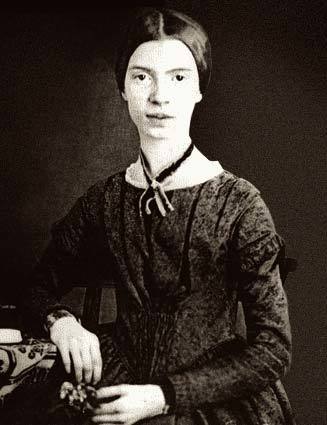
Learn more about Emily Dickinson
. . . . . . . . . .
In Emily Dickinson’s Gardening Life: The Plants and Places That Inspired the Iconic Poet, Marta McDowell traces Dickinson’s life as a gardener and reveals many ways in which her passion for plants is evident in her extensive collection of poems and letters.
The book follows Dickinson’s love of nature and plants through an entire year — forced hyacinth bulbs in winter, saved seeds in summer, and pressed flowers to include in correspondence. Packed with contemporary and historical photography, botanical illustrations, excerpts from Dickinson’s letters, and some of her most cherished poetry, this revealing book is a must-have keepsake for Dickinson fans.
. . . . . . . . . .
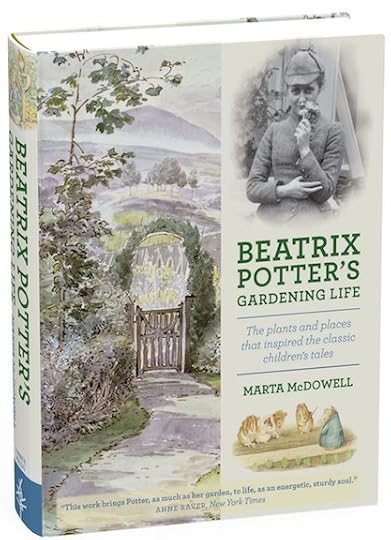
You might also enjoy: Beatrix Potter’s Gardening Life by Marta McDowell
. . . . . . . . . . .
Emily Dickinson’s Gardening Life: An introduction
Marta McDowell, author of Beatrix Potter’s Gardening Life and The World of Laura Ingalls Wilder introduces Emily Dickinson’s Gardening Life:
Emily Dickinson was a gardener.
When you hear the name “Emily Dickinson,” it may bring to mind a white dress of a well-known image of a sixteen-year-old girl staring boldly out of a daguerrotype. Poetry, of course. Probably not gardening.
Emily Dickinson as a gardener doesn’t fit with the Dickinson mythology. The myths were based real phobias of her later years and were also stoked by her first editor, Mabel Loomis Todd, to promote book sales. Since her death in 1886, she has been psychoanalyzed, compared to medieval cloistered mystics, and called “the madwoman in the attic.” All she lacked was a cloister.
Beyond the stuff of literary legend, she was a person devoted to her family, with pleasures and pastimes and deep friendships. She shared a love of plants with her parents and siblings. To friends, she sent bouquets, and to some her numerous correspondents — over one thousand of her letters have been found — pressed flowers.
. . . . . . . . . .
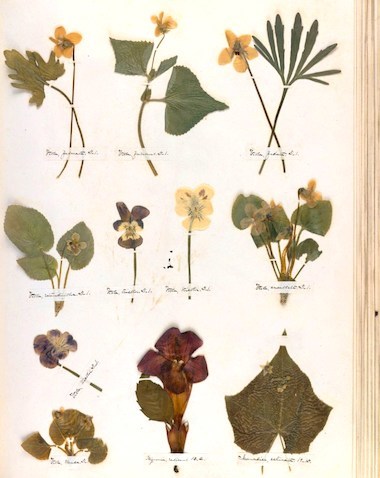
Emily Dickinson collected, pressed, and identified leaves and flowers
in a carefully arranged herbarium
. . . . . . . . . .
She collected wildflowers, walking with her dog, Carlo. She studied botany at Amherst Academy and Mount Holyoke. She tended both a small glass conservatory attached to the front of the house and a long flower garden sloping down the spacious east side of the grounds.
In winter, she forced hyacinth bulbs and in summer she knelt on a red blanket in her flower borders, performing horticulture’s familiar rituals. This book proceeds in calendar fashion, following the seasons. Welcome to Emily Dickinson’s gardening year.
. . . . . . . . . .
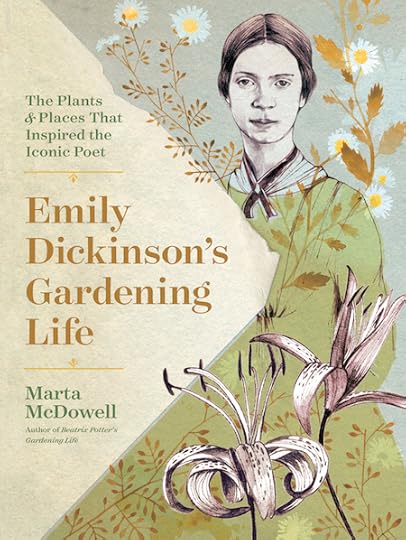
Emily Dickinson’s Gardening Life is available on Amazon*
and wherever books are sold
. . . . . . . . . .
Answer July —
Where is the Bee —
Where is the Blush —
Where is the Hay?
Ah, said July —
Where is the Seed —
Where is the Bud —
Where is the May —
Answer Thee — Me —
Nay — said the May —
Show me the Snow —
Show me the Bells —
Show me the Jay!
Quibbled the Jay —
Where be the Maize —
Where be the Haze —
Where be the Bur?
Here — said the Year —
. . . . . . . . . .
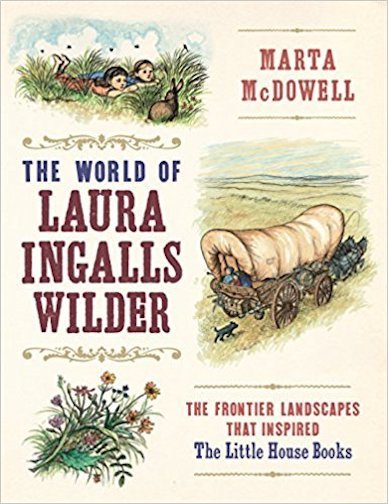
See also: Laura Ingalls Wilder:
Late-Blooming Author with a Passion for Nature
. . . . . . . . . .
About Marta McDowell
Marta McDowell lives, gardens, and writes in Chatham, New Jersey. She consults for public gardens and private clients, writes and lectures on gardening topics, and teaches landscape history and horticulture at the New York Botanical Garden, where she studied landscape design.
Marta’s particular interest is in authors and their gardens, the connection between the pen and the trowel. In 2018, she was the Emily Dickinson Museum’s Gardener-in-Residence, and she is the 2019 winner of the Garden Club of American’s award for outstanding literary achievement. Her other books include Beatrix Potter’s Gardening Life, The World of Laura Ingalls Wilder, and All the President’s Gardens.
. . . . . . . . . .
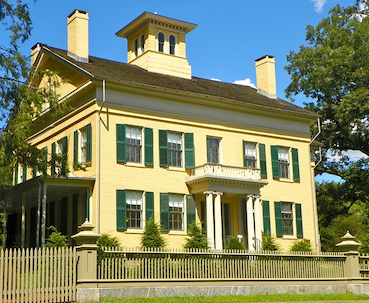
The Emily Dickinson Museum in Amherst, MA
. . . . . . . . . .
*This is an Amazon Affiliate link. If the product is purchased by linking through, Literary Ladies Guide receives a modest commission, which helps maintain our site and helps it to continue growing!
The post Emily Dickinson’s Gardening Life by Marta McDowell appeared first on Literary Ladies Guide.
November 29, 2019
10 Fascinating Facts About Louisa May Alcott, Author of Little Women
Louisa May Alcott (1832 – 1888) may be best known as the author of Little Women and its sequels, but there was more to her than these genteel (yet gently subversive) domestic tales. She was a complex woman whose views were reflected in her literary output. The following fascinating facts about Louisa May Alcott are sure to surprise those who don’t know a lot about the woman behind Little Women.
From her teen years, Louisa was determined to make a living as a writer. She became the Alcott family’s primary breadwinner in her family at a young age, mostly by authoring anonymous thrillers, or what she called “blood and thunder” tales. And from there her life unfolded, often in unexpected ways.
. . . . . . . . . .
She never went to school and grew up “free-range”
Born in Germantown, Pennsylvania, Louisa grew up in Boston and then in Concord, Massachusetts. In a sketch of her childhood, she recalls the delights of “running away” and being allowed to wander around Boston by herself from a very young age.
Always self-identified as a tomboy, she adored running and even wrote that she “must have been a deer or a horse in some former state, because it was such a joy to run.” She never had a formal education other than getting lessons from her father, yet she grew up absorbing the world she grew up in.
. . . . . . . . . .
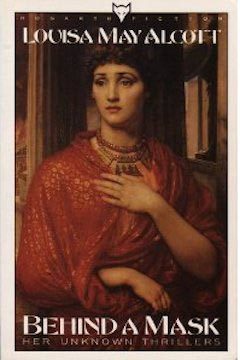
Louisa wrote thrillers to help support her family
Especially at the start of her writing endeavors, Louisa produced a large body of thrillers (otherwise known as gothic or sensational tales) whose sales supported her family. Amos Bronson Alcott was an impractical philosopher without any talent for earning money. Her beloved mother, Abigail May Alcott, did whatever work a woman could get to put food on the table. Louisa wanted nothing more than to ease her “marmee’s” burden.
Using various pseudonyms, Louisa seemed to take perverse pleasure in dark themes, returning to the genre even after financial need no longer compelled her to do this sort of formula writing. The first modern compilation of what Louisa called “blood and thunder tales” was Behind a Mask: The Unknown Thrillers of Louisa May Alcott, published in 1975.
. . . . . . . . . .
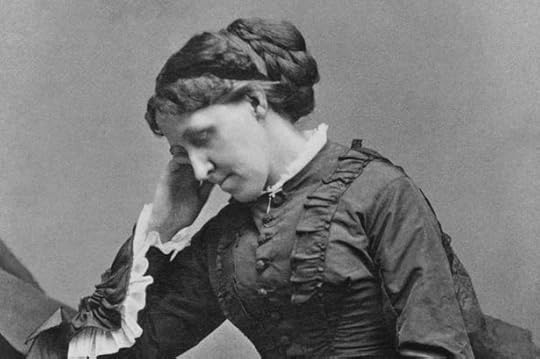
She promoted women’s rights and abolition
Her views were often expressed by the female characters in her books, strong young women who wanted more from life than to get married and have babies. Louisa May Alcott expert Susan Bailey explains that: “Louisa’s feminism was based on autonomy – the right of every woman to be autonomous, the freedom for each woman to realize her true potential as a whole person.”
Louisa contributed to a women’s rights periodical in the 1870s. At the end of the decade, Massachusetts passed a law allowing women to vote in local elections. Louisa registered at once, becoming the first woman to vote in Concord.
She and her family were also ardent abolitionists, a view that was not as widely popular in relatively liberal Massachusetts as one would think. Her father had been one of the earliest abolitionists, having joined the American Anti-slavery Society with William Lloyd Garrison. One of her early memories was of the fugitive slave whom her mother had hidden in their oven.
. . . . . . . . . .
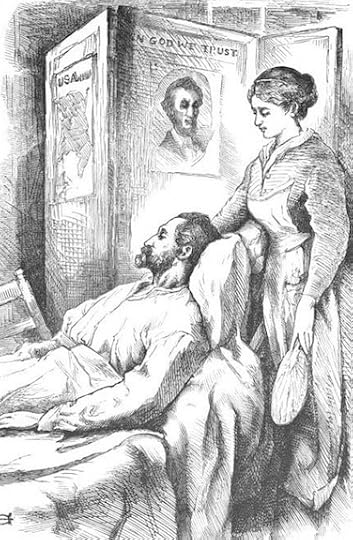
Louisa served briefly as a Union nurse during the Civil War
“I WANT something to do,” she wrote of her desire to contribute to the Union Army’s effort. If women had been allowed to serve as soldiers, Louisa would have surely taken up arms. But as it was, the only direct way women could serve was to volunteer as nurses, and that’s just what she did, dispatching herself to serve at the Union Hotel in Washington, D.C., which had been turned into a makeshift hospital.
Not even a month into her service, Louisa came down with typhoid pneumonia, complete with a horrendous cough and a high fever. She was taken home and suffered a long, grueling recovery; the illness may have caused permanent damage to her health. Yet from her brief stint, Louisa was able to convert the journals she kept into a book called Hospital Sketches, which was a modest success.
. . . . . . . . . .
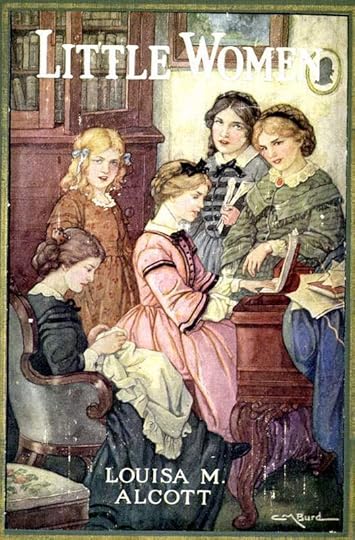
She was reluctant to write a “girl’s story”
The first novel Louisa published under her real name was Moods. Published in 1864, it followed the modest success of Hospital Sketches. But the reception of Moods was disappointing. Tired of churning out sensational tales, Louisa felt a bit adrift as a writer. In 1868, her publisher offhandedly asked her to try writing a “girls’ story” for their list. She cranked out the semi-autobiographical (albeit idealized) novel in two and a half months, though her heart wasn’t in it.
At first, neither Louisa nor her publisher thought the book was in any way remarkable. Yet it truly was an overnight success, with no one more surprised Louisa, who came to appreciate its merits.
. . . . . . . . . .
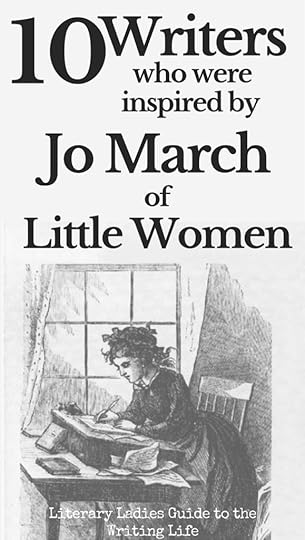
Many women writers have been inspired by the fictional Jo March
Jo March, the standout sister among the quartet in Little Women, is one of the most iconic and influential female characters in literature. Tomboyish and ambitious, with a bit of a temper, she was an idealized alter ego of her creator, Louisa May Alcott. Many women writers, famous and otherwise, have named named Jo as a major inspiration. Here are 10 of them, from Simone de Beauvoir to Patti Smith.
. . . . . . . . . .
Louisa was alarmingly naïve about her sexuality
Despite all that she’d seen in life, Louisa confessed in an 1883 interview: “I am more than half-persuaded that I am a man’s soul, put by some freak of nature into a woman’s body … because I have fallen in love in my life with so many pretty girls and never once the least bit with any man.”
Perhaps unknowingly, the repressed nature of her sexuality helped her avoid the circumscribed path of marriage and motherhood, and allowed her to view the institution dispassionately.
. . . . . . . . . .
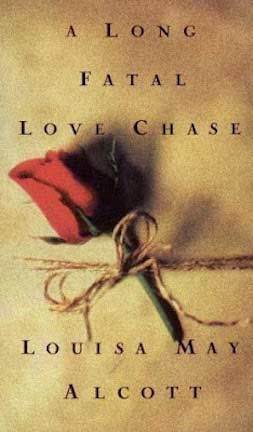
One of her anonymous thrillers was rediscovered and published in 1995
A Long Fatal Love Chase (1866) stands squarely in the “woman in peril” genre — it’s a chilling portrait of a woman being stalked by an unstable husband. This novel would be the longest and last of Louisa’s “sensation tales.” Written under the pseudonym A.M. Barnard, it would take nearly 130 years for it to see the light of day again, and to be attributed to its now-famous author.
Thriller master Stephen King, reviewing A Long Fatal Love Chase in the New York Times, concluded “Genius burned for Louisa May Alcott following A Long Fatal Love Chase, brightly but never again with such primitive and joyful heat. One wonders what kind of writer she might have been had she been able to cast the malignantly conventional spirit of Professor Bhaer from her, and to take her thrillers as seriously as her feminist editors and elucidators do today.”
. . . . . . . . . .
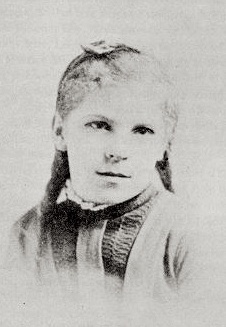
She raised her sister’s daughter for nine years
May Alcott Niereker, the youngest Alcott sister (loosely portrayed as Amy in Little Women), trained as an artist in Europe (subsidized by Louisa’s earnings). There she met a man, married, and had a daughter.
May died within a year of giving birth. Louisa earned the father’s family’s consent raise the child. Adopted at the age of two, the little girl was her Aunt Louisa’s namesake (and nicknamed Lulu). Louisa herself never married nor had her own children, yet from all accounts, the nine years they spent together were happy ones. It was Louisa’s death that ended this lovely and unexpected journey into parenthood.
. . . . . . . . . .
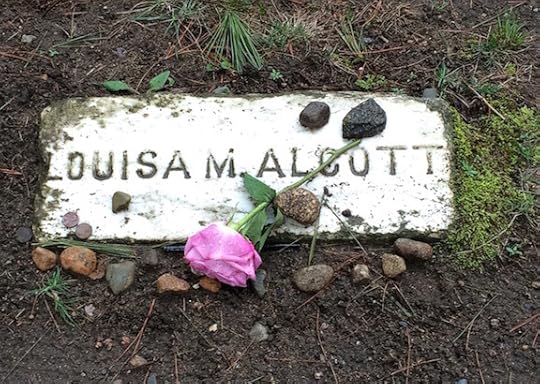
Louisa may have had lupus or another autoimmune disease
Louisa was 55 years old when she died of a stroke in Boston in 1888, her death following just two days after her father’s. She’d long been in poor health, which she and others blamed on the mercury-laced medicine she took for the typhoid fever contracted while serving as a Civil War nurse. However, modern scholars have had other theories for her chronic illness, which included headaches, skin rashes, vertigo, rheumatism, and other symptoms compatible with lupus or other autoimmune diseases.
The post 10 Fascinating Facts About Louisa May Alcott, Author of Little Women appeared first on Literary Ladies Guide.
November 26, 2019
13 Modernist Poems by H.D. (Hilda Doolittle)
Hilda Doolittle (1886 – 1961), known by her nom de plume H.D., was an American-born poet, novelist, translator, and essayist. Modernism, psychoanalysis, and feminism were all influences on her work, as were the effects of World Wars I and II. Following is a selection of poems by H.D. that speak to her experimental and innovative approach to the craft.
H.D has earned her place among iconic modernist writers including T.S. Eliot, Ezra Pound, Marianne Moore, and William Carlos Williams.
Oread
Whirl up, sea—
whirl your pointed pines,
splash your great pines
on our rocks,
hurl your green over us,
cover us with your pools of fir.
At Baia
I should have thought
in a dream you would have brought
some lovely, perilous thing,
orchids piled in a great sheath,
as who would say (in a dream),
“I send you this,
who left the blue veins
of your throat unkissed.”
Why was it that your hands
(that never took mine),
your hands that I could see
drift over the orchid-heads
so carefully,
your hands, so fragile, sure to lift
so gently, the fragile flower-stuff—
ah, ah, how was it
You never sent (in a dream)
the very form, the very scent,
not heavy, not sensuous,
but perilous—perilous—
of orchids, piled in a great sheath,
and folded underneath on a bright scroll,
some word:
“Flower sent to flower;
for white hands, the lesser white,
less lovely of flower-leaf,”
or
“Lover to lover, no kiss,
no touch, but forever and ever this.”
Sea Rose
Rose, harsh rose,
marred and with stint of petals,
meagre flower, thin,
sparse of leaf,
more precious
than a wet rose
single on a stem—
you are caught in the drift.
Stunted, with small leaf,
you are flung on the sand,
you are lifted
in the crisp sand
that drives in the wind.
Can the spice-rose
drip such acrid fragrance
hardened in a leaf?
Sea Poppies
Amber husk
fluted with gold,
fruit on the sand
marked with a rich grain,
treasure
spilled near the shrub-pines
to bleach on the boulders:
your stalk has caught root
among wet pebbles
and drift flung by the sea
and grated shells
and split conch-shells.
Beautiful, wide-spread,
fire upon leaf,
what meadow yields
so fragrant a leaf
as your bright leaf?
Loss
The sea called—
you faced the estuary,
you were drowned as the tide passed.—
I am glad of this—
at least you have escaped.
The heavy sea-mist stifles me.
I choke with each breath—
a curious peril, this—
the gods have invented
curious torture for us.
One of us, pierced in the flank,
dragged himself across the marsh,
he tore at the bay-roots,
lost hold on the crumbling bank—
Another crawled—too late—
for shelter under the cliffs.
I am glad the tide swept you out,
O beloved,
you of all this ghastly host
alone untouched,
your white flesh covered with salt
as with myrrh and burnt iris.
We were hemmed in this place,
so few of us, so few of us to fight
their sure lances,
the straight thrust—effortless
with slight life of muscle and shoulder.
So straight—only we were left,
the four of us—somehow shut off.
And the marsh dragged one back,
and another perished under the cliff,
and the tide swept you out.
Your feet cut steel on the paths,
I followed for the strength
of life and grasp.
I have seen beautiful feet
but never beauty welded with strength.
I marvelled at your height.
You stood almost level
with the lance-bearers
and so slight.
And I wondered as you clasped
your shoulder-strap
at the strength of your wrist
and the turn of your young fingers,
and the lift of your shorn locks,
and the bronze
of your sun-burnt neck.
All of this,
and the curious knee-cap,
fitted above the wrought greaves,
and the sharp muscles of your back
which the tunic could not cover—
the outline
no garment could deface.
I wonder if you knew how I watched,
how I crowded before the spearsmen—
but the gods wanted you,
the gods wanted you back.
Leda
Where the slow river
meets the tide,
a red swan lifts red wings
and darker beak,
and underneath the purple down
of his soft breast
uncurls his coral feet.
Through the deep purple
of the dying heat
of sun and mist,
the level ray of sun-beam
has caressed
the lily with dark breast,
and flecked with richer gold
its golden crest.
Where the slow lifting
of the tide,
floats into the river
and slowly drifts
among the reeds,
and lifts the yellow flags,
he floats
where tide and river meet.
Ah kingly kiss—
no more regret
nor old deep memories
to mar the bliss;
where the low sedge is thick,
the gold day-lily
outspreads and rests
beneath soft fluttering
of red swan wings
and the warm quivering
of the red swan's breast.
Heat
O wind, rend open the heat,
cut apart the heat,
rend it to tatters.
Fruit cannot drop
through this thick air—
fruit cannot fall into heat
that presses up and blunts
the points of pears
and rounds the grapes.
Cut the heat—
plough through it,
turning it on either side
of your path.
Pear Tree
Silver dust
lifted from the earth,
higher than my arms reach,
you have mounted.
O silver,
higher than my arms reach
you front us with great mass;
no flower ever opened
so staunch a white leaf,
no flower ever parted silver
from such rare silver;
O white pear,
your flower-tufts,
thick on the branch,
bring summer and ripe fruits
in their purple hearts.
Stars Wheel in Purple
Stars wheel in purple, yours is not so rare
as Hesperus, nor yet so great a star
as bright Aldeboran or Sirius,
nor yet the stained and brilliant one of War;
stars turn in purple, glorious to the sight;
yours is not gracious as the Pleiads are
nor as Orion's sapphires, luminous;
yet disenchanted, cold, imperious face,
when all the others blighted, reel and fall,
your star, steel-set, keeps lone and frigid tryst
to freighted ships, baffled in wind and blast.
Adonis
1.
Each of us like you
has died once,
has passed through drift of wood-leaves,
cracked and bent
and tortured and unbent
in the winter-frost,
the burnt into gold points,
lighted afresh,
crisp amber, scales of gold-leaf,
gold turned and re-welded
in the sun;
each of us like you
has died once,
each of us has crossed an old wood-path
and found the winter-leaves
so golden in the sun-fire
that even the live wood-flowers
were dark.
2.
Not the gold on the temple-front
where you stand
is as gold as this,
not the gold that fastens your sandals,
nor thee gold reft
through your chiselled locks,
is as gold as this last year's leaf,
not all the gold hammered and wrought
and beaten
on your lover's face.
brow and bare breast
is as golden as this:
each of us like you
has died once,
each of us like you
stands apart, like you
fit to be worshipped.
Helen
All Greece hates
the still eyes in the white face,
the lustre as of olives
where she stands,
and the white hands.
All Greece reviles
the wan face when she smiles,
hating it deeper still
when it grows wan and white,
remembering past enchantments
and past ills.
Greece sees, unmoved,
God's daughter, born of love,
the beauty of cool feet
and slenderest knees,
could love indeed the maid,
only if she were laid,
white ash amid funereal cypresses.
The Mysteries Remain
The mysteries remain,
I keep the same
cycle of seed-time
and of sun and rain;
Demeter in the grass,
I multiply,
renew and bless
Bacchus in the vine;
I hold the law,
I keep the mysteries true,
the first of these
to name the living, dead;
I am the wine and bread.
I keep the law,
I hold the mysteries true,
I am the vine,
the branches, you
and you.
All Mountains
“Give me all mountains.”
Hymn to Artemis
Give me all mountains.
City, town, the precinct
of temple,
the crowded town gate,
I have no love for:
walls must crush or hide
whether of market
palace court
or precinct.
Give me the stream's cold path,
the grove of pine,
for garden terrace
the unclaimed
bleak
wild stretches
of the mountain side.
Give me no earth
crushed flat
with cruel layer
of fitted square
or meted length,
but boulders
unhewn
but set apart
as secret altars,
high in the loveliest
alder grove
or poplar.
Give me for altar fire
the wild azalia;
let Phoebos keep
the fervid market place.
Give him white marble,
him the luminous white
of sheltering porch,
carved pillar,
portico.
Give him the wharf,
the quay,
the street,
the market,
street-corner
and the turning of the street.
Nor do I envy him,
my fiery brother,
who count as fair
only the reach of snow
set stark
in midair.
Marble of islands,
snow of distant points,
threatened with wave of pine,
with wash of alder,
my islands
shift and change,
now here now there,
dazzling,
white,
granite,
silver
in blue ether.
I swim
who tread the mountain path as air.
Let Phoebos keep the market,
let white Love
claim all the islands
of sea-port or river;
would I contend with these?
Nay,
I would rather pity him, my brother,
pity white, passionate Love
who only knows
the prompting
of the restless, thwarted seas,
shivering in porches
from the bitter air.
Ah Zeus,
ennoble,
care for these thy children,
but give me the islands of the upper air,
all mountains
and the towering mountain trees.
The post 13 Modernist Poems by H.D. (Hilda Doolittle) appeared first on Literary Ladies Guide.
November 24, 2019
10 Poems by Anne Spencer about Nature, Love, and Life
Anne Spencer, born Annie Bethel Bannister (February 6, 1882 – July 27, 1975), was an African-American poet, teacher, librarian, gardener, and civil rights activist. She’s best remembered as a prominent figure in the Harlem Renaissance. In this sampling of poems by Anne Spencer, we experience her affinity for nature, love, and life itself.
Spencer’s literary career began as she was a student in Virginia Seminary with her first poem, “The Skeptic.” After creating this poem, she continued to write on any surface she could find to record her thoughts, including the walls of her home and random scraps of paper. She was an outspoken advocate for women’s rights, civil rights, and granting the right of respect to everyone.
For Jim, Easter Eve
If ever a garden was a Gethsemane,
with old tombs set high against
the crumpled olive tree—and lichen
this, my garden has been to me.
For such as I none other is so sweet;
Lacking old tombs, here stands my grief,
and certainly its ancient tree.
Peace is here and in every season
a quiet beauty.
The sky falling about me
evenly to the compass . . .
What is sorrow but tenderness now
in this earth-close frame of land and sky
falling constantly into horizons
of east and west, north and south;
what is pain but happiness here
amid these green and wordless patterns,
indefinite texture of blade and leaf;
Beauty of an old, old tree,
last comfort in Gethsemane.
. . . . . . . . . .
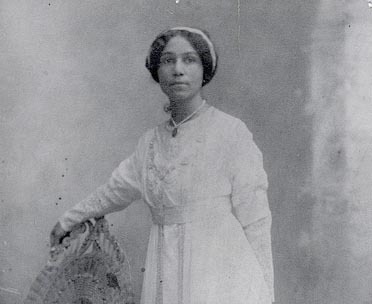
. . . . . . . . . .
Lines to a Nasturtium (A Lover Muses)
Flame-flower, Day-torch, Mauna Loa,
I saw a daring bee, today, pause, and soar,
Into your flaming heart;
Then did I hear crisp, crinkled laughter
As the furies after tore him apart?
A bird, next, small and humming,
Looked into your startled depths and fled . . .
Surely, some dread sight, and dafter
Than human eyes as mine can see,
Set the stricken air waves drumming
In his flight.
Day-torch, Flame-flower, cool-hot Beauty,
I cannot see, I cannot hear your flutey;
Voice lure your loving swain,
But I know one other to whom you are in beauty
Born in vain:
Hair like the setting sun,
Her eyes a rising star,
Motions gracious as reeds by Babylon, bar
All your competing;
Hands like, how like, brown lilies sweet,
Cloth of gold were fair enough to touch her feet.
Ah, how the sense reels at my repeating,
As once in her fire-lit heart I felt the furies
Beating, beating.
. . . . . . . . . .
[Earth, I thank you]
Earth, I thank you
for the pleasure of your language
You’ve had a hard time
bringing it to me
from the ground
to grunt thru the noun
To all the way
feeling seeing smelling touching
—awareness
I am here!
. . . . . . . . . .
He Said
“Your garden at dusk
Is the soul of love
Blurred in its beauty
And softly caressing;
I, gently daring
This sweetest confessing,
Say your garden at dusk
Is your soul. My Love.”
. . . . . . . . . .
1975
Turn an earth clod
Peel a shaley rock
In fondness molest a curly worm
Whose familiar is everywhere
Kneel
And the curly worm sentient now
Will light the word that tells the poet what a poem is.
. . . . . . . . . . .
Life-Long, Poor Browning
Life-long, poor Browning never knew Virginia,
Or he’d not grieved in Florence for April sallies
Back to English gardens after Euclid’s linear:
Clipt yews. Pomander Walks, and pleached alleys
Primroses, prim indeed, in quiet ordered hedges,
Waterways, soberly, sedately enchanneled,
No thin riotous blade even among the sedges,
All the wild country-side tamely impaneled . . .
Dead, now, dear Browning lives on in heaven, —
(Heaven’s Virginia when the year’s at its Spring)
He’s haunting the byways of wine-aired leaven
And throating the notes of the wildings on wing:
Here canopied reaches of dogwood and hazel,
Beech tree and redbud fine-laced in vines,
Fleet clapping rills by lush fern and basil,
Drain blue hills to lowlands scented with pines . . .
Think you he meets in this tender green sweetness
Shade that was Elizabeth . . . immortal completeness!
. . . . . . . . . .
Requiem
Oh, I who so wanted to own some earth,
Am consumed by the earth instead:
Blood into river
Bone into land
The grave restores what finds its bed.
Oh, I who did drink of Spring’s fragrant clay,
Give back its wine for other men:
Breath into air
Heart into grass
My heart bereft — I might rest then.
. . . . . . . . . .
Taboo
Being a Negro Woman is the world’s most exciting
game of “Taboo”: By hell there is nothing you can
do that you want to do and by heaven you are
going to do it anyhow —
We do not climb into the jim crow galleries
of scenario houses we stay away and read
I read garden and seed catalogs, Browning,
Housman, Whitman, Saturday Evening Post
detective tales, Atlantic Monthly, American
Mercury, Crisis, Opportunity, Vanity Fair,
Hibberts Journal, oh, anything.
I can cook delicious things to eat. . .
we have a lovely home—one that
money did not buy—it was born and evolved
slowly out of our passionate, poverty-
stricken agony to own our own home.
Happiness.
. . . . . . . . . .
The Wife-Woman
Maker-of-Sevens in the scheme of things
From earth to star;
Thy cycle holds whatever is fate, and
Over the border the bar.
Though rank and fierce the mariner
Sailing the seven seas,
He prays as he holds his glass to his eyes,
Coaxing the Pleiades.
I cannot love them; and I feel your glad,
Chiding from the grave,
That my all was only worth at all, what
Joy to you it gave,
These seven links the Law compelled
For the human chain —
I cannot love them and you, oh,
Seven-fold months in Flanders slain!
A jungle there, a cave here, bred six
And a million years
Sure and strong, mate for mate, such
Love as culture fears;
I gave you clear the oil and wine;
You saved me your hob and hearth—
See how even life may be ere the
Sickle comes and leaves a swath.
But I can wait the seven of moons,
Or years I spare,
Hoarding the heart’s plenty, nor spend
A drop, nor share —
So long but outlives a smile and
A silken gown;
Then gaily I reach up from my shroud,
And you, glory-clad, reach down.
. . . . . . . . . .
Lines to a Nasturtium
A lover muses
Flame-flower, Day-torch, Mauna Loa,
I saw a daring bee, today, pause, and soar,
Into your flaming heart;
Then did I hear crisp crinkled laughter
As the furies after tore him apart?
A bird, next, small and humming,
Looked into your startled depths and fled . . .
Surely, some dread sight, and dafter
Than human eyes as mine can see,
Set the stricken air waves drumming
In his flight.
Day-torch, Flame-flower, cool-hot Beauty, I cannot see, I cannot hear your fluty
Voice lure your loving swain,
But I know one other to whom you are in beauty
Born in vain;
Hair like the setting sun,
Her eyes a rising star,
Motions gracious as reeds by Babylon, bar
All your competing;
Hands like, how like, brown lilies sweet,
Cloth of gold were fair enough to touch her feet . . .
Ah, how the senses flood at my repeating,
As once in her fire-lit heart I felt the furies
Beating, beating.
. . . . . . . . . .
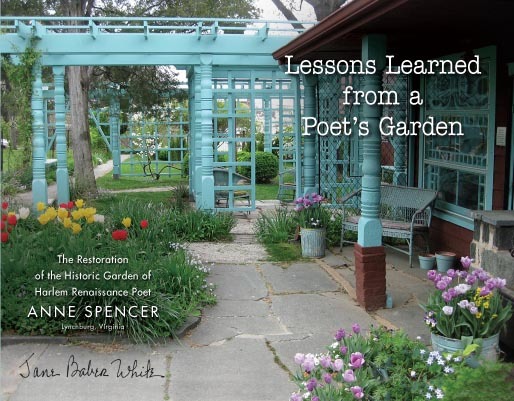
Learn more about Anne Spencer
. . . . . . . . . .
Skyler Isabella Gomez is a 2019 SUNY New Paltz graduate with a degree in Public Relations and a minor in Black Studies. Her passions include connecting more with her Latin roots by researching and writing about legendary Latina authors.
The post 10 Poems by Anne Spencer about Nature, Love, and Life appeared first on Literary Ladies Guide.



